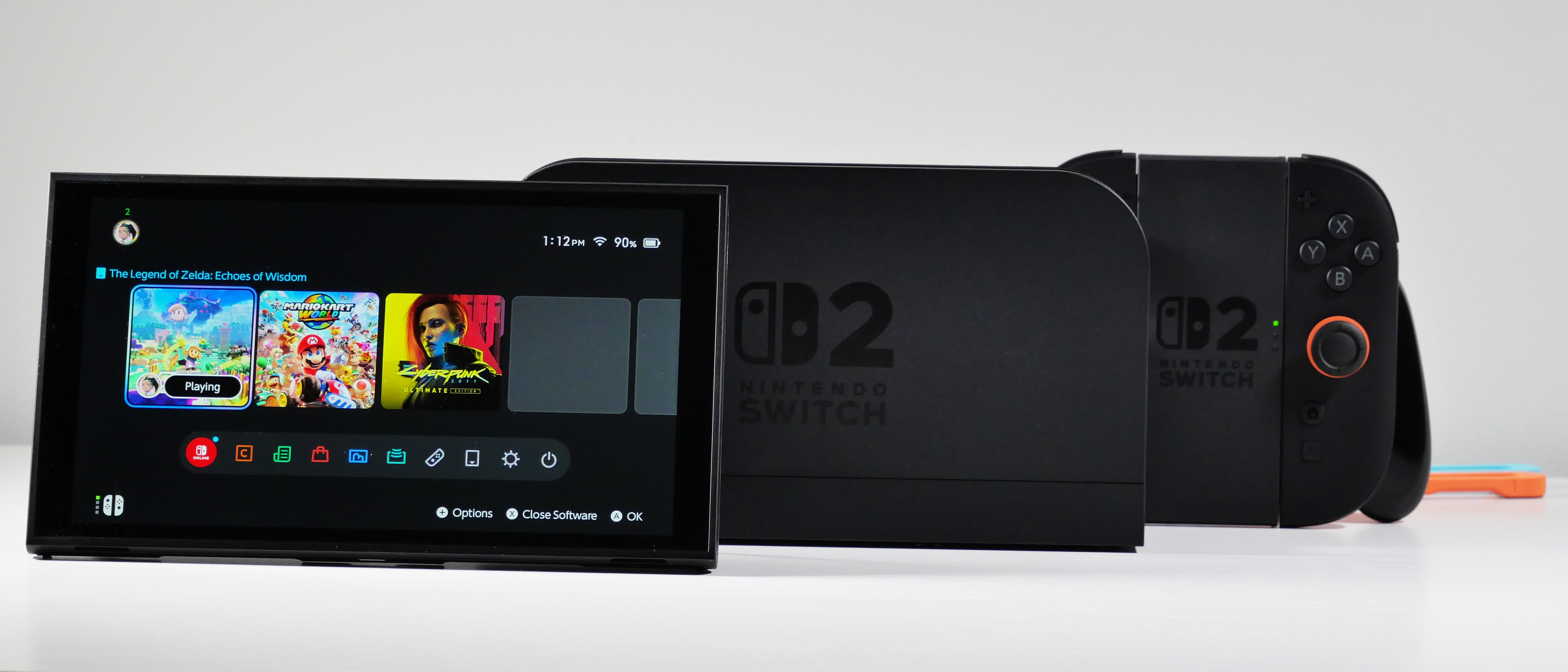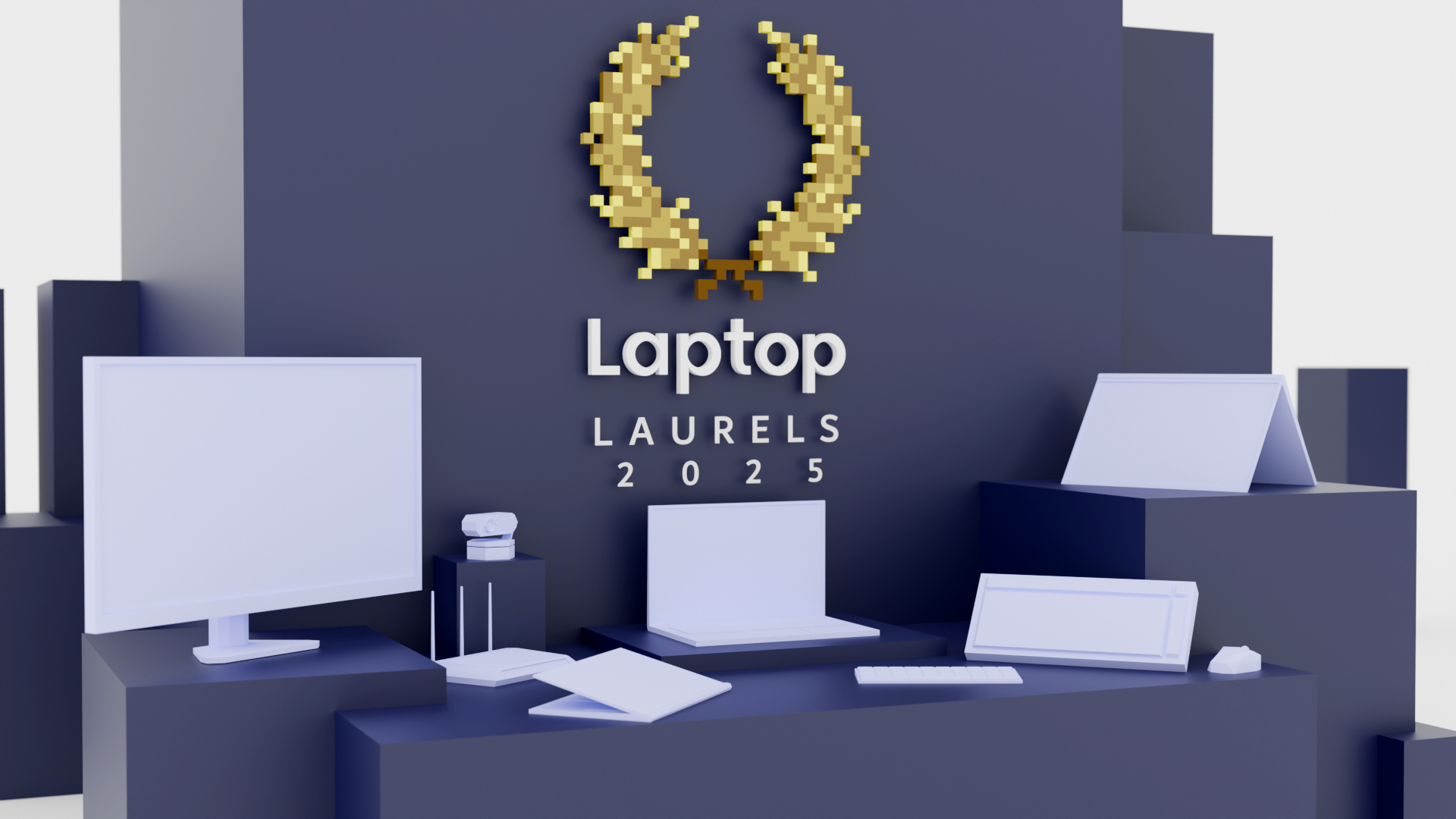Laptop Mag Verdict
The Nintendo Switch 2 offers a significant boost in performance and features to keep up with modern AAA gaming, and while it might stumble (especially with its price), it’s a great handheld gaming device that deserves your attention (when on sale).
Pros
- +
A sharp, high-refresh rate display
- +
Strong overall performance with frame generation
- +
Impressive performance in TV mode
- +
Improvement to individual Joy-Con 2 controllers
- +
Solid speakers
- +
Decent battery life
Cons
- -
$450 ($500 with Mario Kart World) is a bit much
- -
Handheld mode remains an uncomfortable experience
- -
No OLED
- -
Demanding games can get crunchy in handheld mode
Why you can trust Laptop Mag
After eight long years, the Nintendo Switch 2 is here, reincarnated like Link and his forebears, but this time, Mario Kart World is paving the road.
Despite the length of time, it feels like just yesterday when the original Nintendo Switch launched — I vividly remember rushing over to a GameStop to pick up the Collector’s Edition bundle for The Legend of Zelda: Breath of the Wild. This launch game got me drooling to get my hands on the new experimental hardware.
But I found myself hesitant this time around. Do I want to pay $500 just to play the new Mario Kart? There’s no OLED screen, the Joy-Con 2 controllers are uncomfortable, and demanding games can struggle to run in handheld mode.
However, my doubts about the Nintendo Switch 2 gently drifted away, like listening to a lullaby from Link’s ocarina. With its smooth and sharp display, strong overall performance (both in handheld and TV modes), and revamped Joy-Con 2 controllers, the Switch 2 mostly delivers. And really, there’s nothing else like it.
Nintendo delivers much-needed improvements with the Switch 2, but there’s one thing that might stop me from getting it (more on that later). The question you might have, though: Is the Switch 2 right for you? Let’s jump into why the Nintendo Switch 2 may be the greatest gaming handheld device to date.
Nintendo Switch 2: Specs
| Header Cell - Column 0 | Nintendo Switch 2 |
|---|---|
Price | $450 (starting), $500 (Mario Kart World bundle) |
CPU | Nvidia T239 |
GPU | Nvidia T239 Ampere-based |
RAM | 12GB (9GB for games) |
Storage | 256GB UFS |
Display | 7.9-inch, 1920 x 1080, 120Hz, LCD with HDR10 |
Battery | 2~3 hours (Rated for 2-6.5 hours) |
Dimensions | 10.7 x 4.5 x 0.55~1.2 inches (Joy-Cons 2 attached) |
Weight | 0.88 pounds (1.18 pounds with Joy-Con 2) |
Nintendo Switch 2: Price and value
Even if you manage to summon an eldritch god to secure an in-stock Nintendo Switch 2, can you afford it?
The Nintendo Switch 2's base price is $450, and you can get a bundle that includes Mario Kart World for $500. I imagine most folk would opt for the bundle because Mario Kart World costs a whopping $80, so getting it for an additional $50 is a steal. Well, maybe not a steal because I feel like we’re being robbed in this era of $80 games.
Sign up to receive The Snapshot, a free special dispatch from Laptop Mag, in your inbox.
The Nintendo Switch 2 is scarce, but it will eventually restock and go on sale, so maybe wait a little longer unless you’re passionate about playing Mario Kart.
Nintendo Switch 2: Console
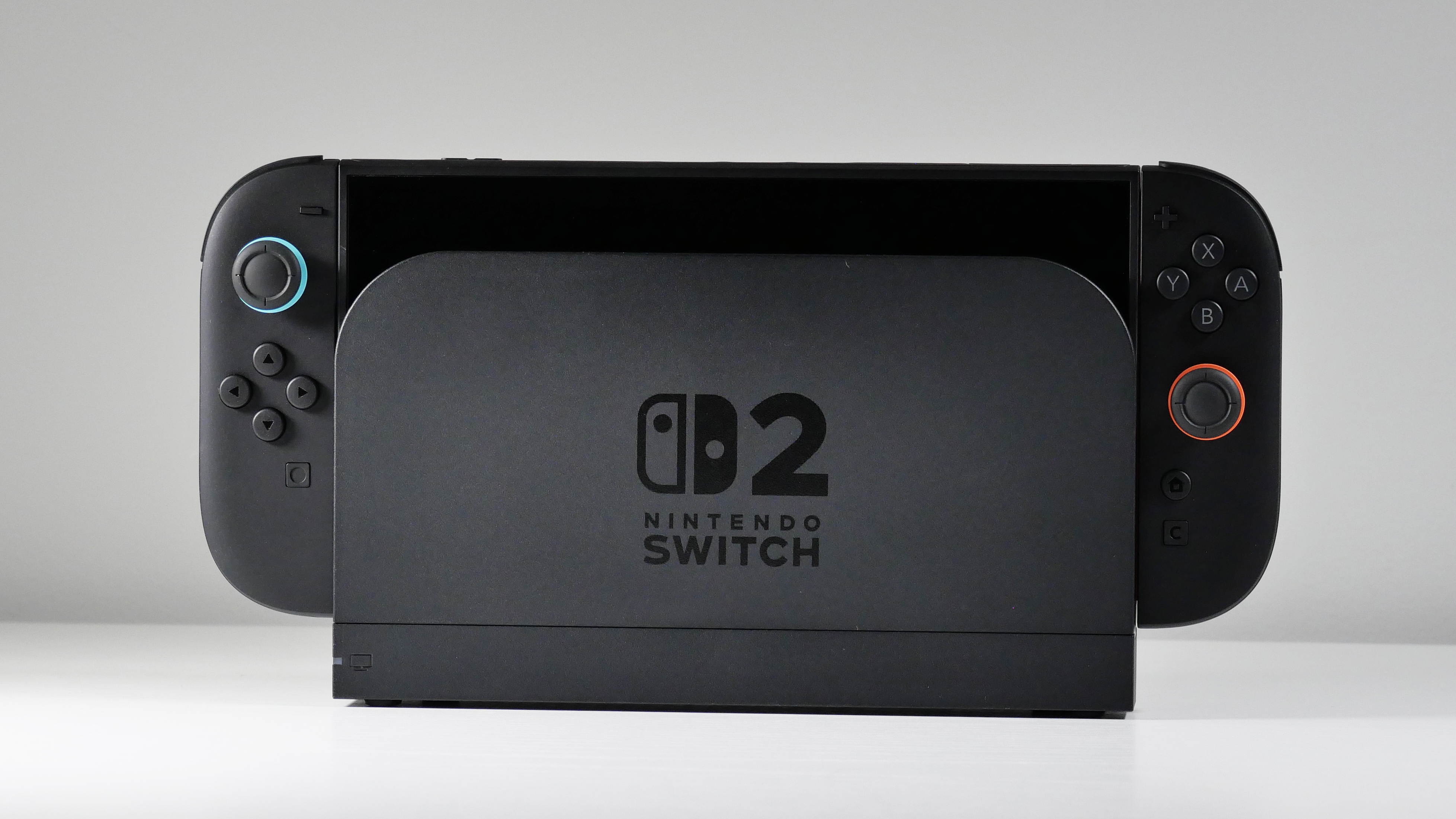
The Nintendo Switch 2 console isn’t too dissimilar from the original Nintendo Switch, although it is bigger.
At 0.88 pounds (1.18 pounds with Joy-Con 2) and 10.7 x 4.5 x 0.55~1.2 inches (Joy-Con 2 attached), there’s a lot more to hold. But with that comes a bigger 7.9-inch display, which is much welcome. There’s a small issue, however. Or rather, a big issue: The bezels are chunky. We don’t need a bigger Switch if that display real estate is better managed. Either that, or make the Switch smaller.
Thankfully, Nintendo got the message on the charging front — there are now two USB Type-C charging ports, one on the bottom and one on the top. You’ll still find the power button, volume buttons, and game cartridge slot on the top, while the speakers are located on the bottom, surrounding the charging port.
Aside from the additional Type-C port, the kickstand is the most significant upgrade to the base design. It is a simple yet sturdy bar that maneuvers roughly 150 degrees. One odd thing I noticed is that the hinges of the kickstand offer a bit of wiggle room, so the kickstand may not be 100% flat. This may be intentional, since a more rigid design could snap more easily, but it’s worth noting. (Additionally, the microSD card slot is hidden behind the kickstand.)
Nintendo Switch 2: Joy-Con 2
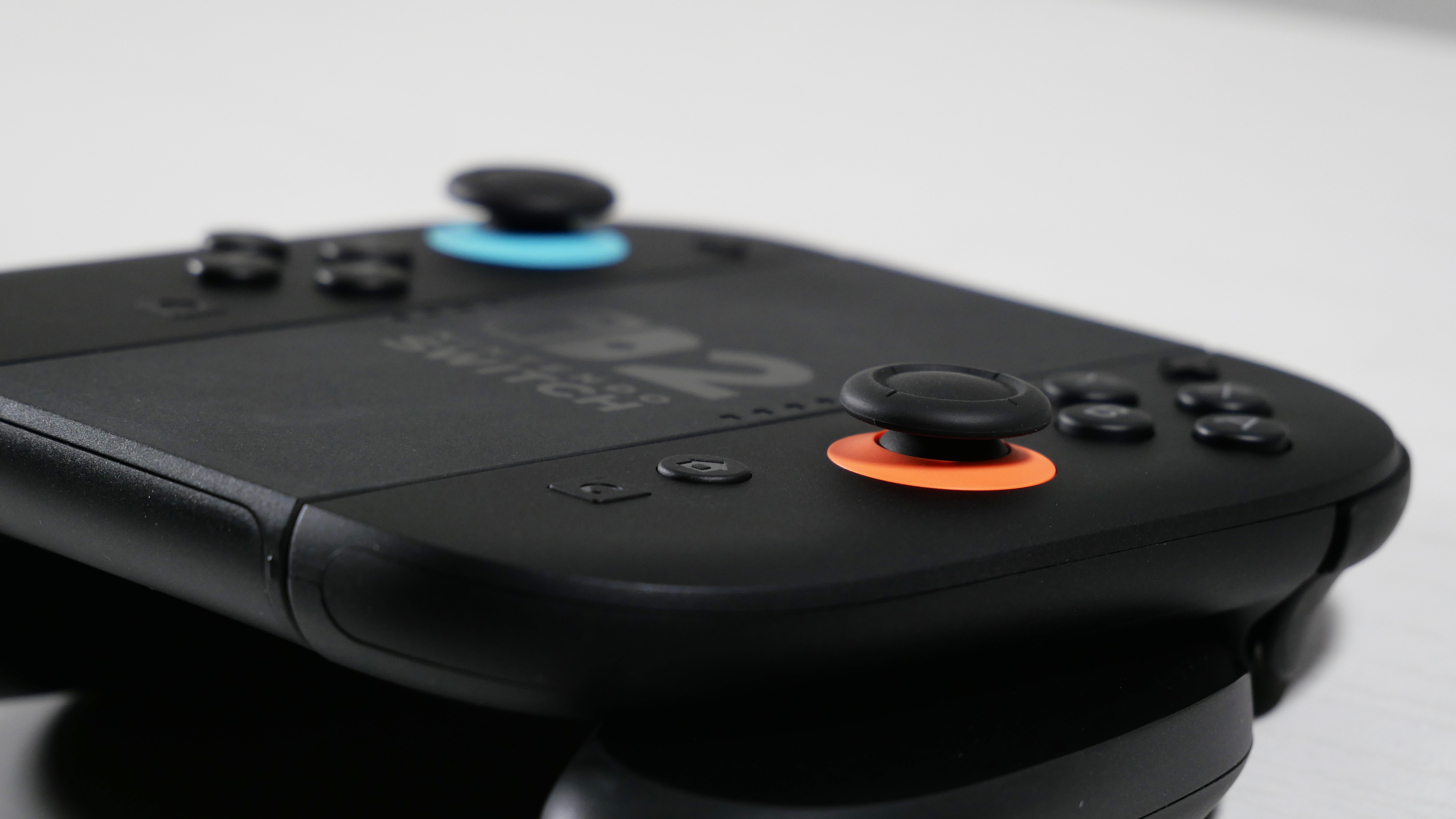

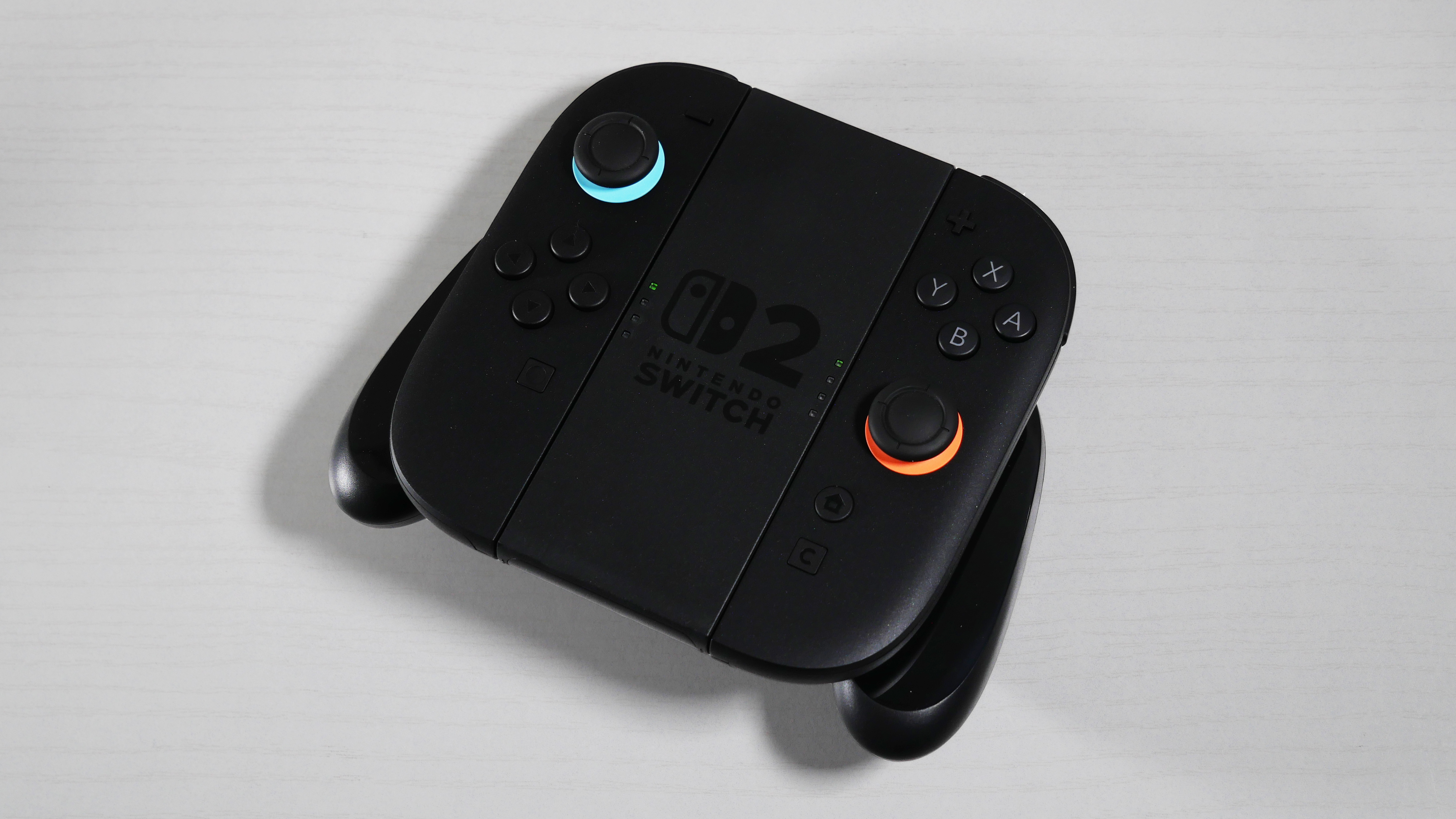
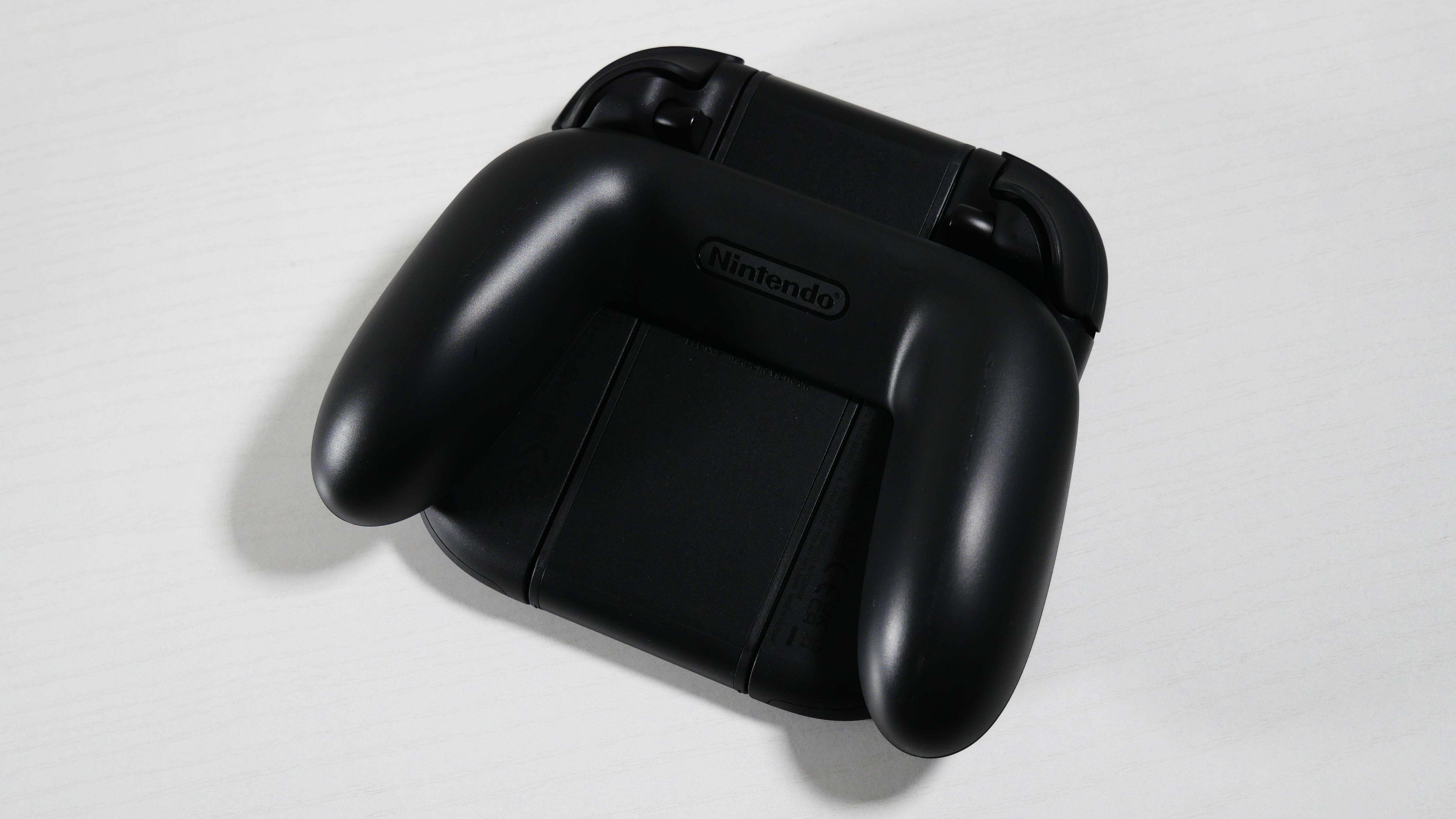
Are you ready for a splash of color? Well, too bad. Nintendo stripped the colors off the Switch 2. That may upset some folks, and rightfully so, but I kind of like it. Kind of.
Technically, the console is still mostly black except for the internal bits where the Joy-Con 2 controllers plug in; it sports blue on the left and red(ish) on the right. The Joy-Con 2 controllers sport the same color scheme on their internals, where you'd use them as separate controllers. The only splash of color we get outside of that is at the base of the analog sticks.
Nintendo likely chose to make the console all black because blue and red wouldn't pair well with alternative Joy-Con 2 colors. However, I would’ve liked it if the Joy-Con 2 controllers that shipped with the Switch 2 featured more accents in their respective colors, like those tiny triangles on the D-pad and even the font on the face buttons, both of which would maintain their minimalist design.
The layout is mostly the same, down to where the buttons are placed on the Joy-Con 2 controllers. The only new feature on the Switch 2 is the C button, located under the Home button on the right Joy-Con 2.
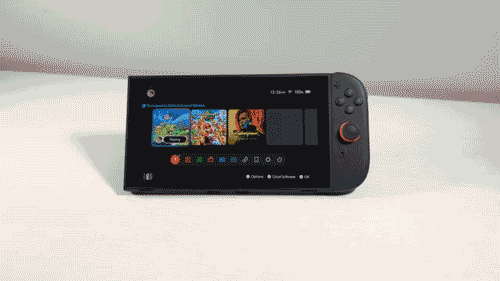
At the top, you’ve got the usual bumpers and triggers, but there’s also a new button: the release button, which you use to detach the controllers. This is one of my favorite design improvements because the Joy-Con 2 controllers seamlessly attach to the console magnetically. It is so easy to plug in that my two-year-old did it herself.
I have some slight concerns about the durability while in use (like bending it) and while docked (the connector is exposed to the elements), but we won’t know how much punishment it can take until long-term usage.
When detached, you can connect the Joy-Con 2 controllers to the included Grip or the Straps. Thanks to the magnets, connecting and disconnecting from both is surprisingly easy.
Nintendo Switch 2: Dock
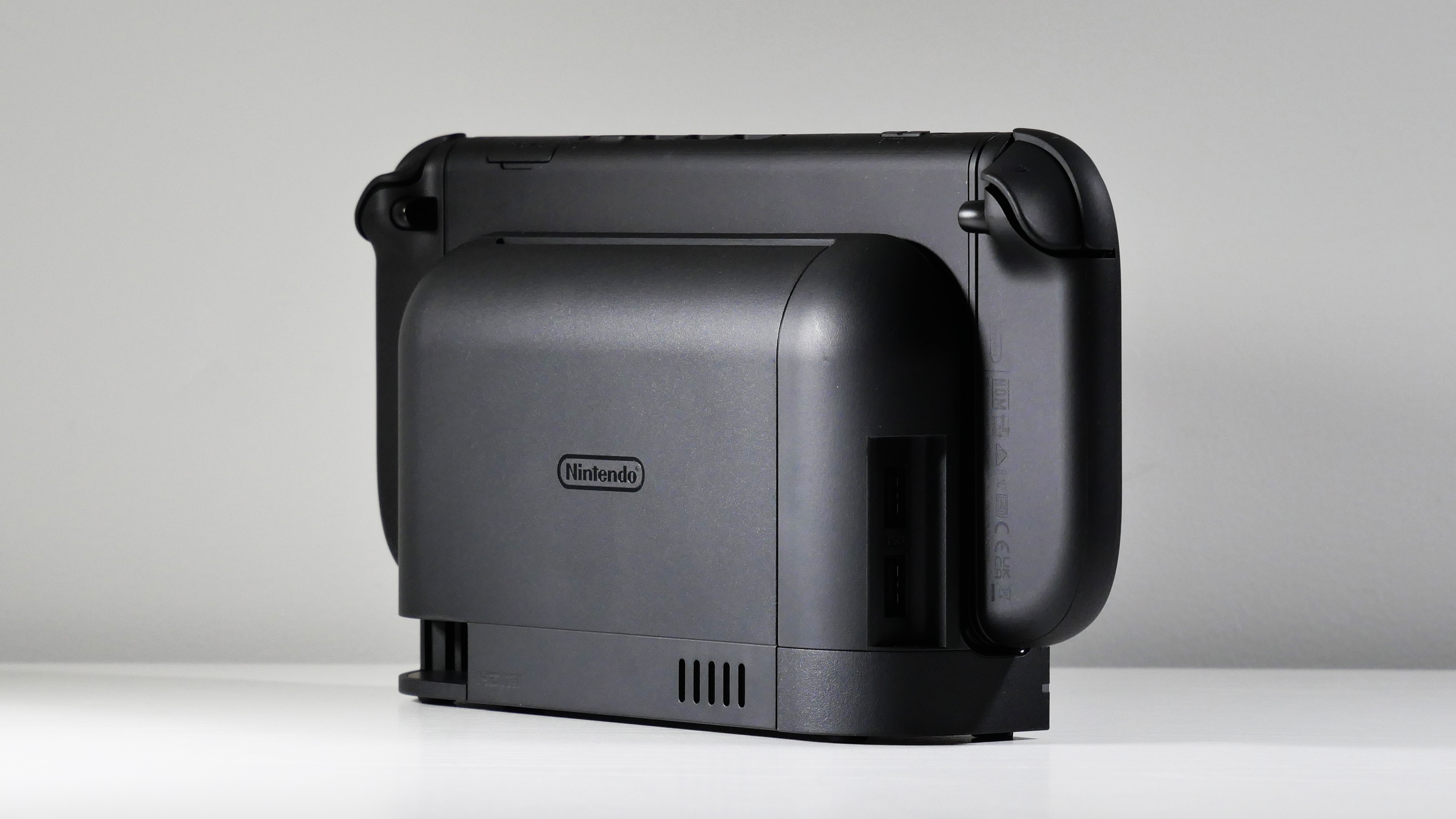
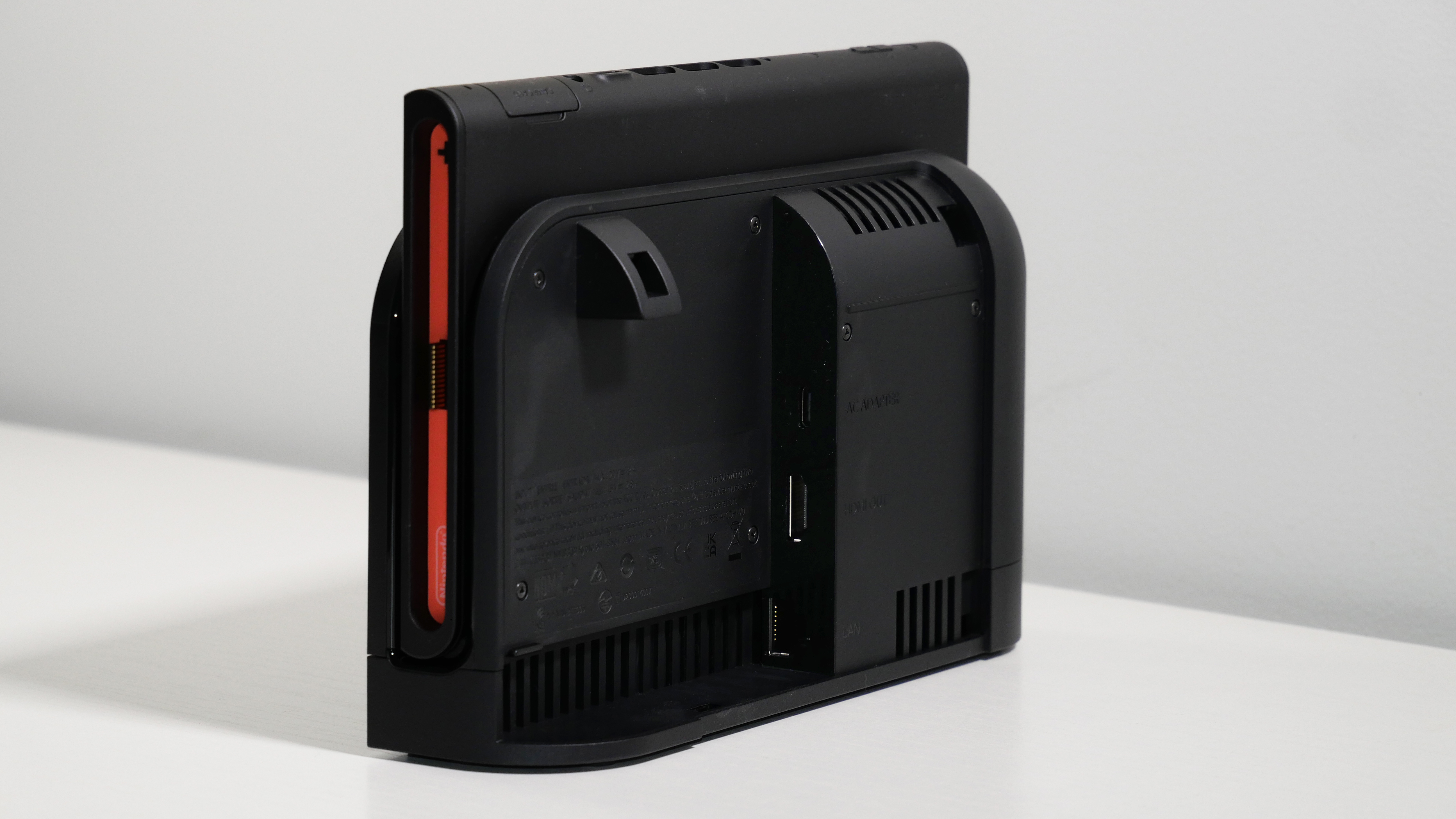
Many folks, including myself, had issues with the original Nintendo Switch Dock — it was flimsy, and it had the audacity to scratch my Switch’s display.
I can’t say whether this new dock will scuff the Nintendo Switch 2, but I can say that it’s certainly more sturdy. My cats love walking behind the TV, and they’ve consistently knocked over my previous Nintendo Switch dock, but this one is as steadfast as Donkey Kong when I crash into oncoming traffic.
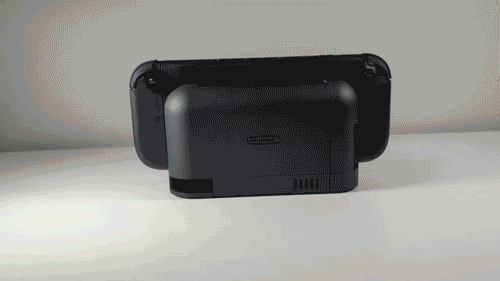
It stacks up to 7.9 x 4.5 x 2 inches and weighs 0.89 pounds, so it’s not too heavy, but it’s sturdy enough to counteract the weight of the HDMI cable. However, it’s a bit back-heavy, since it’s curved to allow room for the Type-C, HDMI, and Ethernet ports, so it may move when the Switch 2 isn’t docked. On the side, you’ll find two USB Type-A ports. Unfortunately, there’s no additional USB Type-C port, which seems like a miss as Type-C products take over the industry.
The back panel no longer sports hinges — it just pops right off. I don’t know how I feel about that, but something did need to change. The previous Switch had flimsy hinges, so Nintendo needed to either reinforce the hinges or take them off, and it went with the latter option. At the very least, it’s easy to snap on.
Nintendo Switch 2: Comfort
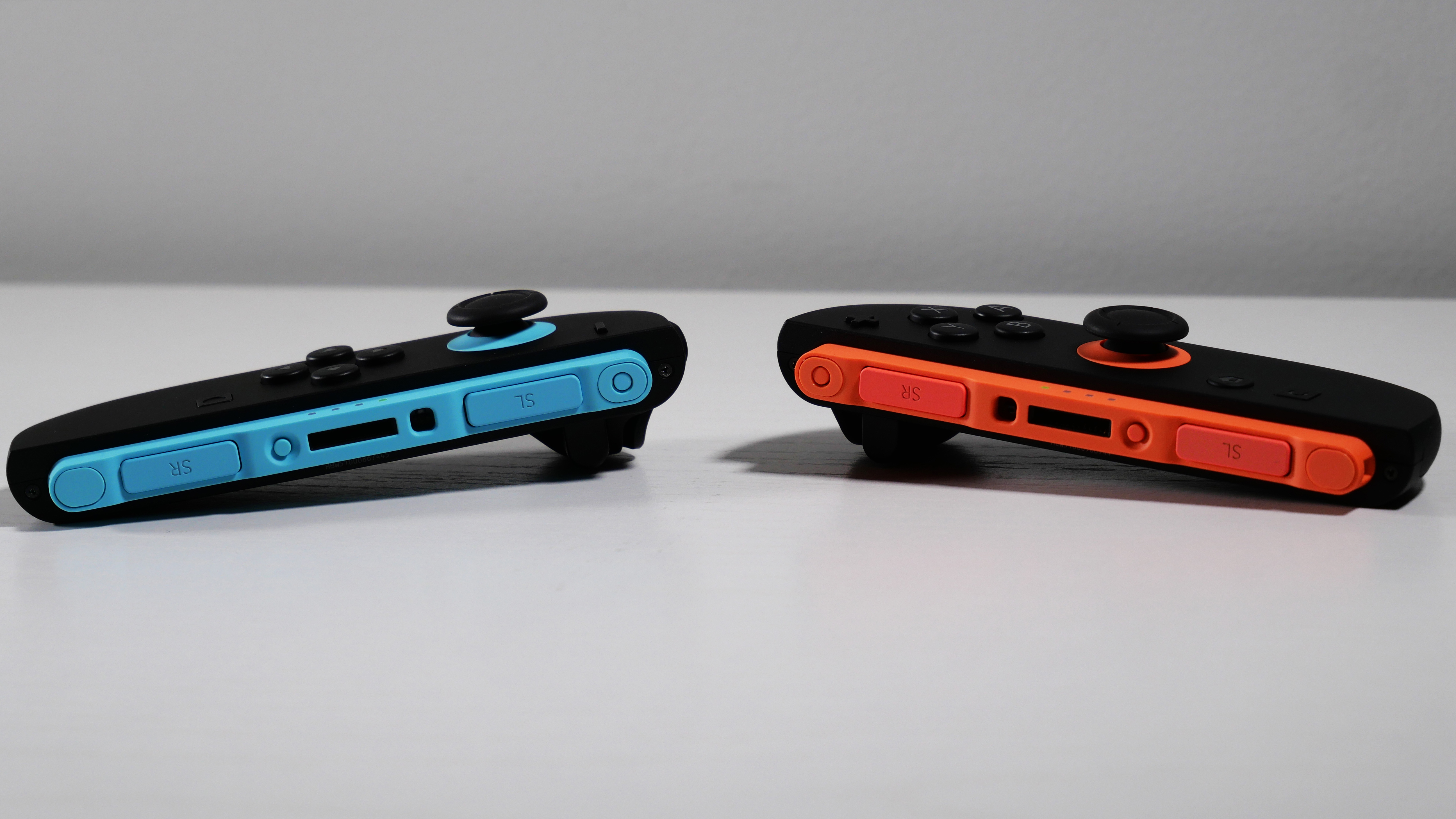
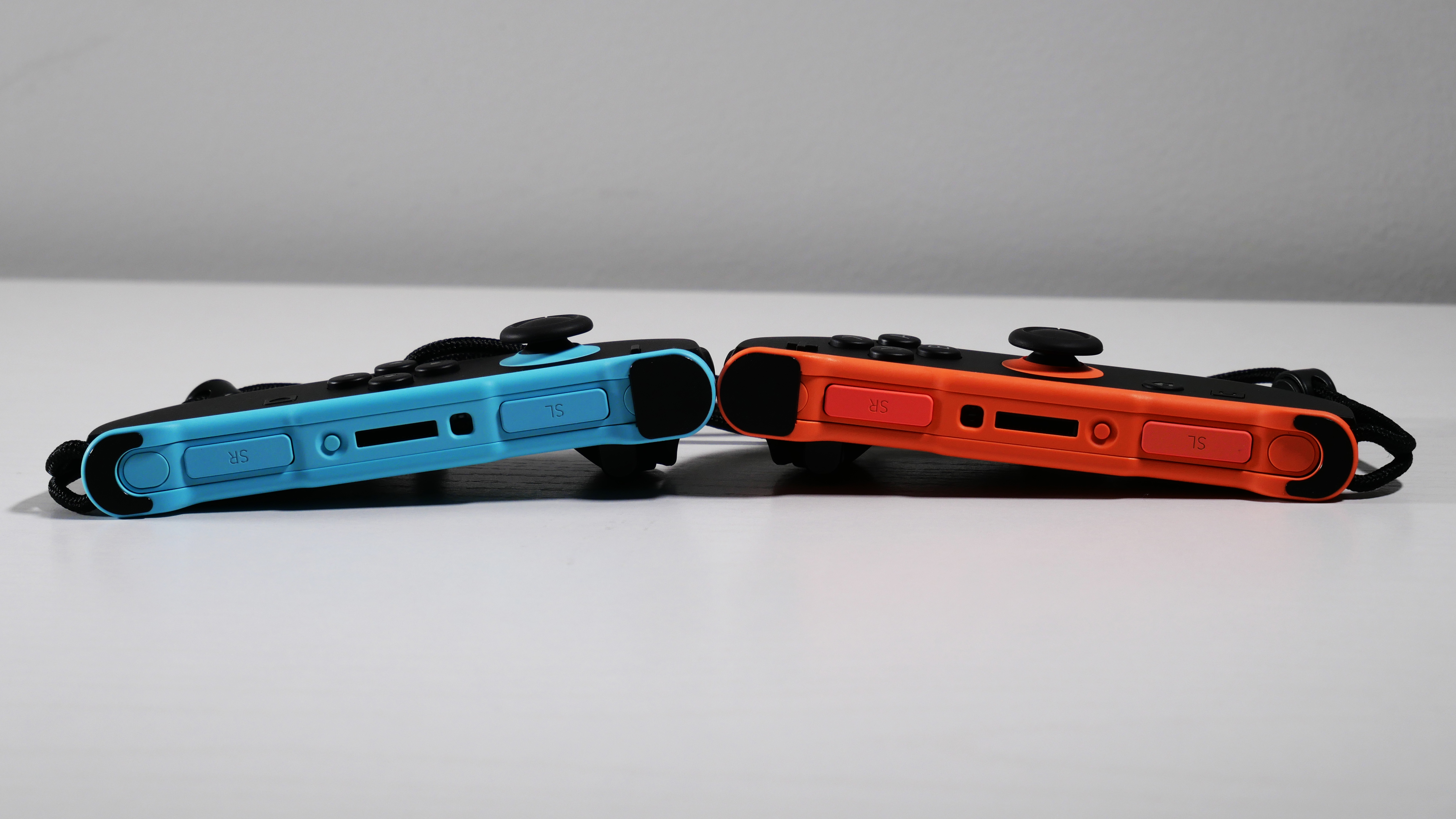
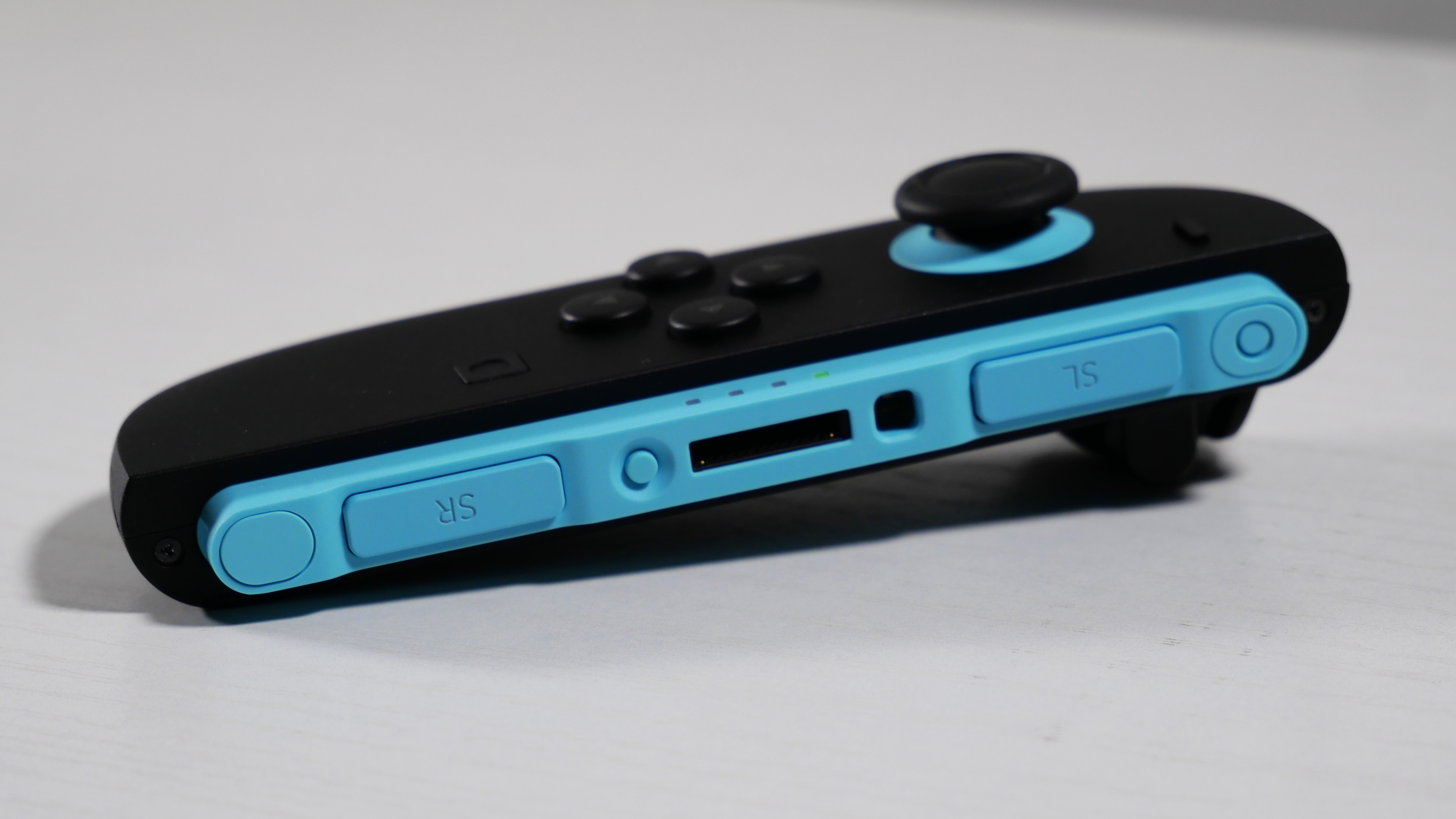
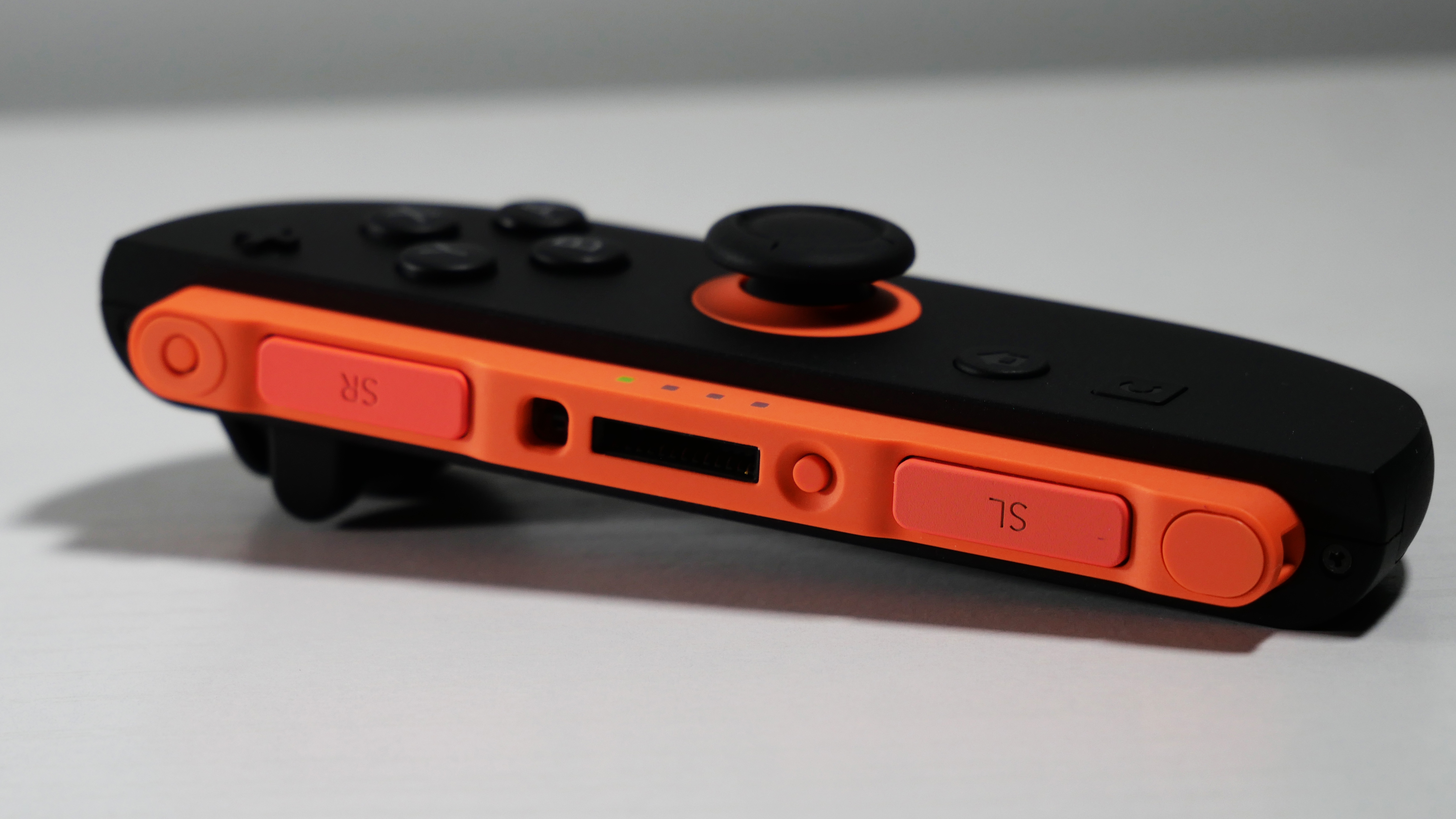
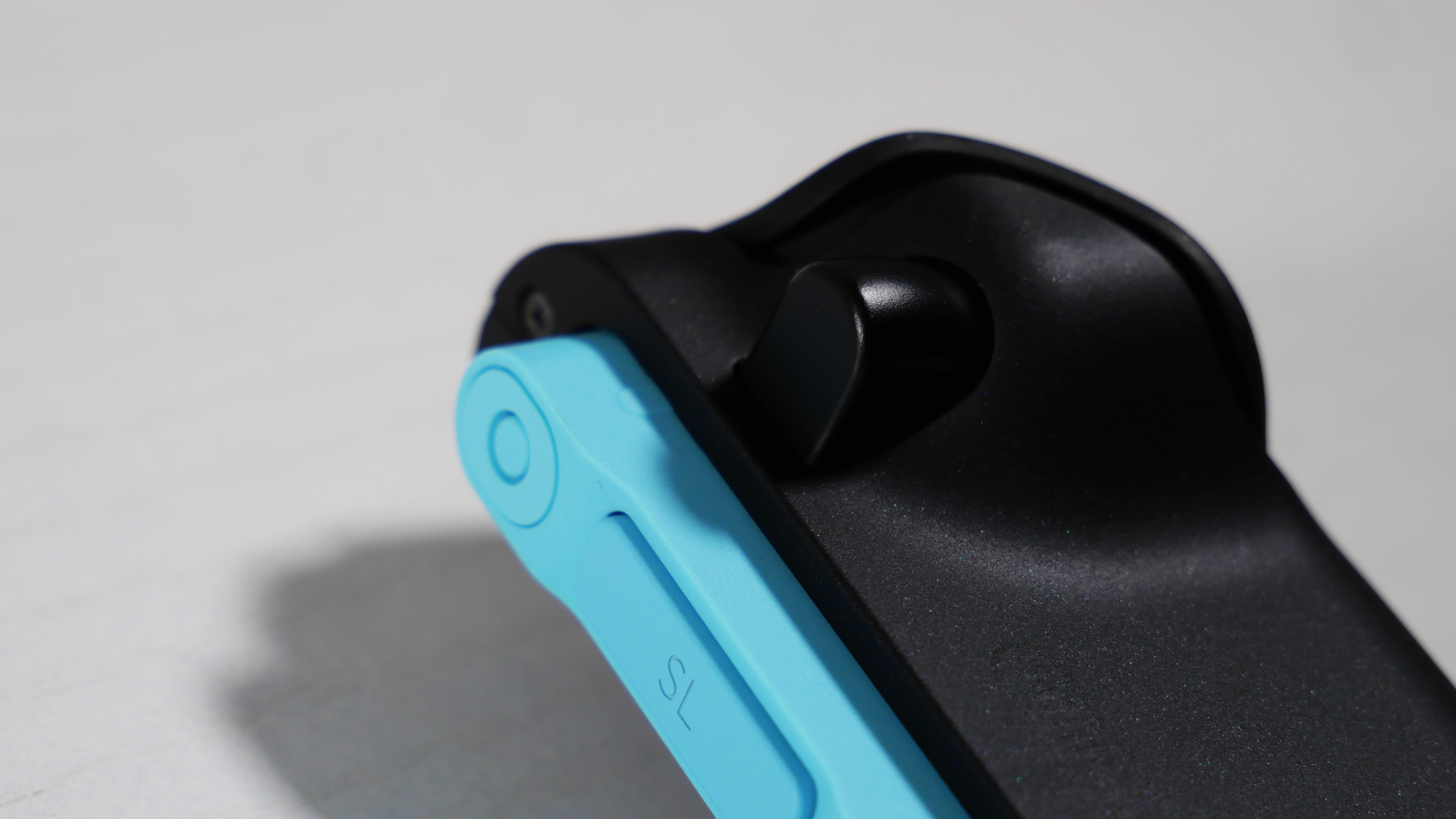
I’m enjoying my time with the Nintendo Switch 2, but the controllers are not comfortable.
Ugh… Listen, I enjoyed my time with the original Nintendo Switch, and I’m enjoying my time with the Nintendo Switch 2, but the controllers are not comfortable.
The Joy-Con 2 controllers did next to nothing to enhance the ergonomics. They do not conform to my hands, and so the added weight on the console made me put more support into my palms. As I began dominating the world of Hyrule with a bunch of little Zol jellies in The Legend of Zelda: Echoes of Wisdom, I found myself shifting my hands every few minutes. Not only was I uncomfortable, but I also felt my hands getting tingly from the lack of blood flow.
Like I said, I had this problem with the original Nintendo Switch, and I solved that by purchasing one of my favorite accessories, the Hori Split Pad Pro. However, the problem with the Hori Split Pad Pro was that it didn’t feature any rumble, and it couldn’t be used separately from the console. I hope that we get to see a Hori Split Pad Pro 2 or an equivalent with the same features as the Joy-Con 2 controllers.
As far as the gameplay experience goes, the controllers may be larger, but the inputs feel generally the same. However, I will say that clicking on the analog stick feels much more impactful due to its height and sturdiness.
The greatest upgrade to comfort is using the Joy-Con 2 as separate controllers. Since it’s bigger, there’s less cramping in my hands, and the bumpers on the interior are also significantly larger and easier to click. My two-year-old could not click the top buttons on the original Joy-Con, but now she can spam her items in Mario Kart World and knock me out of first place with the Joy-Con 2.
Jumping into Cyberpunk 2077: Phantom Liberty felt rough. Like the previous Switch, first-person shooters feel clunky on the Joy-Con 2 controllers. That’s mostly due to the size of the analog sticks and how the console conforms to my hands. It’s difficult to precisely take off an enemy’s head with my sniper. I’ve mostly resorted to using my katana, which is unfortunate, but fun in its own way.
When attached to the included Grip, the Joy-Con 2 controllers certainly feel better to control. The rigid layout makes them a little awkward to use, but they offer a more comfortable experience out of the box.
The Straps add more security and a bit of buffer room to fill out the individual controllers. It doesn't feel necessary per se, especially since the singular controller experience is so much better, but it's nice to have if you're using motion controls.
Nintendo Switch 2: Accessories

Speaking of comfort, you can enhance your overall Nintendo Switch 2 experience with the available accessories.
The first accessory I'd buy is the Nintendo Switch 2 Pro Controller. Since the Pro Controller features a more traditional layout, it's leagues more ergonomic. You can technically use your old Switch Pro Controller with the Switch 2, but if you're thinking about an upgrade, the Switch 2 Pro Controller features the C button, two programmable back buttons, and Nintendo’s second-generation rumble tech. It does cost a whopping $85, however.
If you are a fan of the Grip, you could purchase the Charging Grip for $40. It charges the Joy-Con 2 controllers and offers those two additional back buttons. Unfortunately, you'll run into the aforementioned comfort issues.
Thankfully, the original Joy-Con controllers are compatible with the Switch 2. I got a group of friends together to play Mario Kart World, and the old controllers worked smoothly.
Like the original Switch, the Switch 2 still does not natively support Bluetooth for controllers. So if you want to use your PS5 DualSense controller, you'll need to buy an adapter.
Nintendo Switch 2: Mouse mode

Wow, I did not expect it to be this bad, but it is this bad.
I hopped into Cyberpunk 2077: Phantom Liberty (the best game DLC around; fight me), and it quickly became unbearable. Moving the mouse felt okay. Using it for a few hours would be exhausting. And it’s not at all useful for precise aiming, so I had to ditch my sniper for a shotgun.
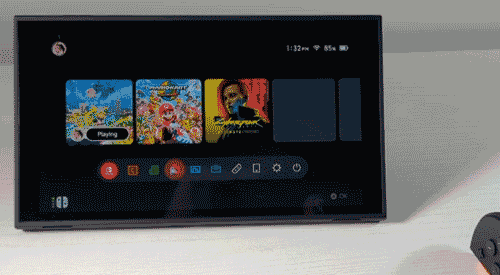
But the worst of it is the buttons. You need to adjust your hand every time you need to click a different button. I instantly found this problematic. Every time Songbird batted her eyelashes at me, I needed to adjust my whole hand just to click Y to select one of the dialogue prompts.
However, implementing mouse mode is objectively a good thing. You can use third-party mice with the Nintendo Switch 2 to take advantage of this with better hardware. The only hurdle, however, is getting the face buttons on the mouse. You’d need a borderline MMO mouse, but hopefully, a third-party Nintendo Switch 2 mouse will be more optimal.
Nintendo Switch 2: Battery life
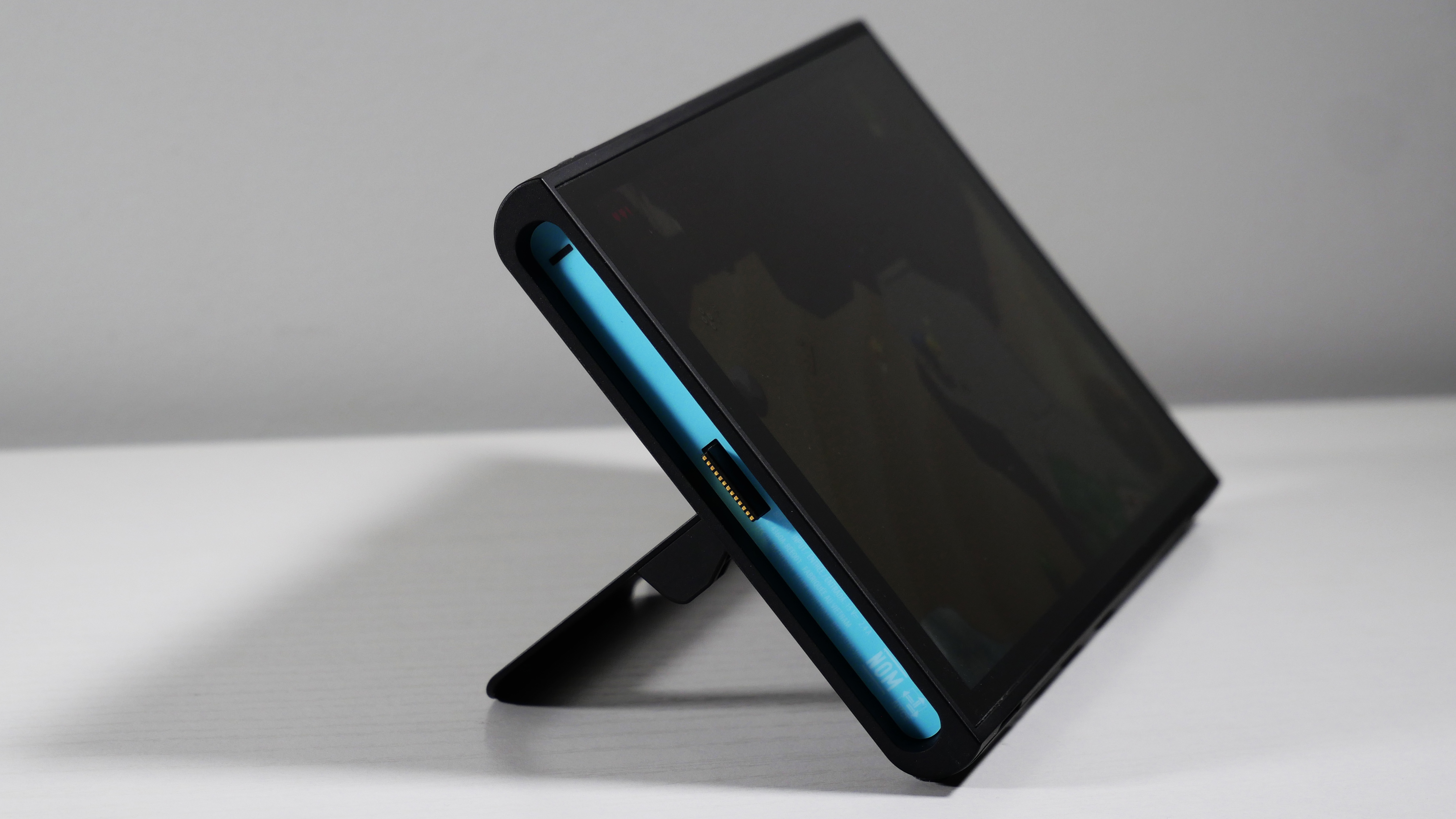
It could be better, but it’s not bad.
Cozying up in my bed with 100% effort and battery, I cycled through Mario Kart World, The Legend of Zelda: Echoes of Wisdom, and Cyberpunk 2077: Phantom Liberty, and the Nintendo Switch 2 crashed to 1% in roughly 2 hours and 45 minutes. Battery life may vary depending on what you’re playing, but it does fall within Nintendo’s 2- to 6.5-hour range.
Technically, it’s just enough time to take my ridiculously long train ride from New Jersey to NYC, and then hop over to Brooklyn to meet some friends. However, it is a downgrade from the Nintendo Switch OLED model, which Nintendo rated for 4.5 to 9 hours of battery life.
Nintendo Switch 2: Display
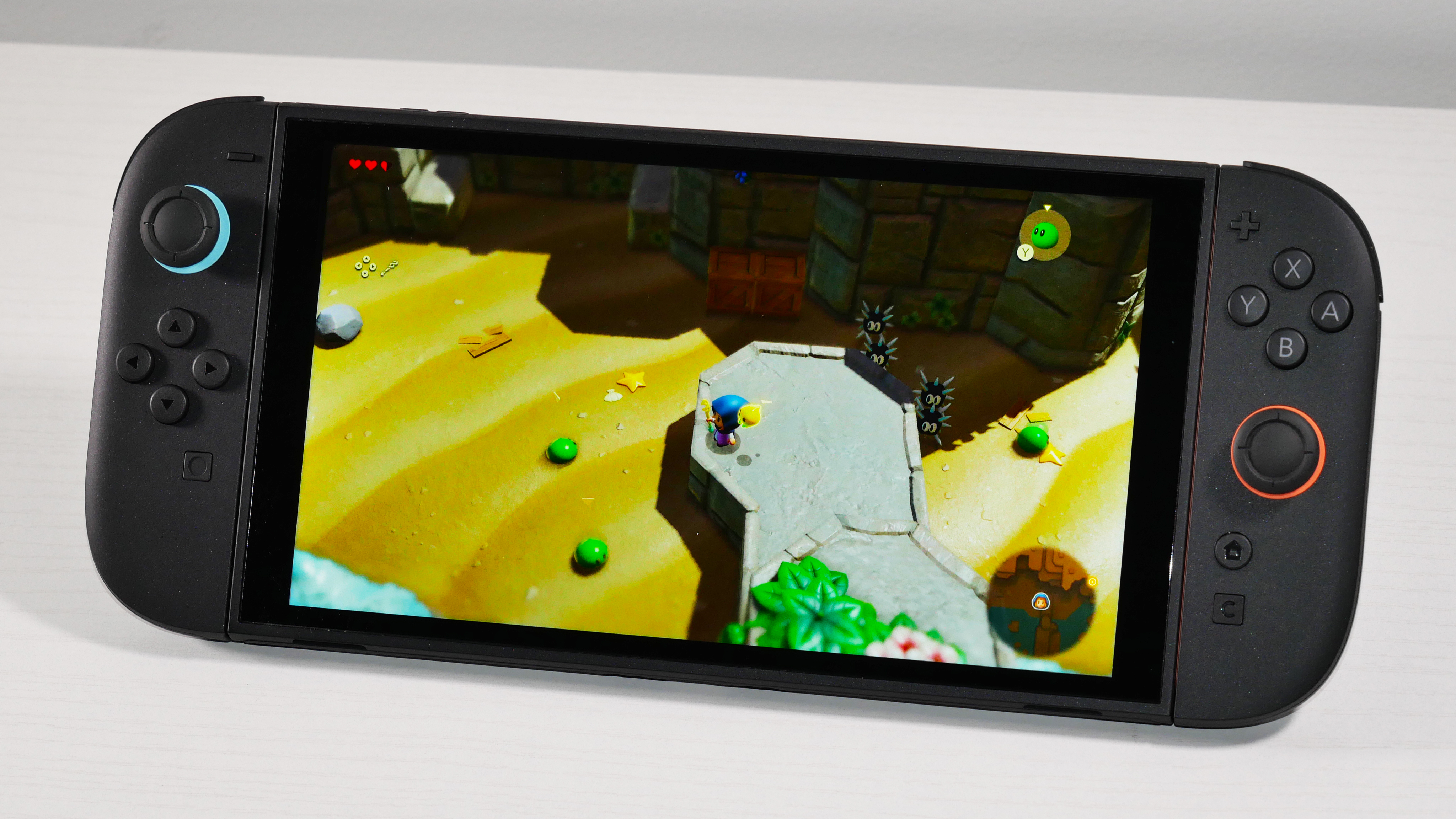
If I had to boil down my reasons for skipping the Switch 2 to just one, it’d be the lack of OLED.
Another slight Nintendo committed against me is removing the OLED display. I love my Nintendo Switch OLED, and it's impossible to beat that with the Switch 2’s LCD screen… at least in terms of color and contrast. The lack of an OLED screen might be the Switch 2 dealbreaker for me.
The Switch 2’s 7.9-inch, 1920 x 1080, 120Hz, HDR10 display rocks all the specs that can overshadow the Switch’s OLED display on paper. It's larger, sharper, smoother, and offers HDR support.
Following Songbird’s instructions to sneak my way into Dogtown, the Switch 2’s display captured the range of colorful chaos of the opening market in Cyberpunk 2077: Phantom Liberty. The bright yellow night sign and the NPC wearing a pink tank top looked accurate, but not necessarily vivid. The panel gets decently bright, too, maintaining the detail of the shadowy underground bits in the previous section.
However, due to the glossiness of the display, it catches some serious glare depending on the space you’re in. This isn’t a new issue, but it could be mitigated with higher brightness. Although, that could be problematic with LCD. In dark scenes, I saw the light of the back panel leaking brightness through the black. Moments like this are where it really feels like I’m looking at a screen, which kills the immersion a bit.
With regard to the color, I felt the same when roaming around Hyrule in The Legend of Zelda: Echoes of Wisdom. The grass and flowers were appropriately green and pink, respectively, but they didn’t jump off the screen. I also saw that when traveling the desert sands in Mario Kart World, the blue sky and yellow sand looked overexposed by the excessive backlighting from the LCD screen. The biggest difference between LCD and OLED is that, unlike the former, the latter looks like a window instead of a screen.
If I had to boil down my reasons for skipping the Switch 2 to just one, it’d be the lack of OLED. Sure, an OLED model would be much more expensive, but Nintendo can’t just tease us with the Switch OLED and then bring us back to the dark ages with LCD. I won’t have it.
Nintendo Switch 2: Audio
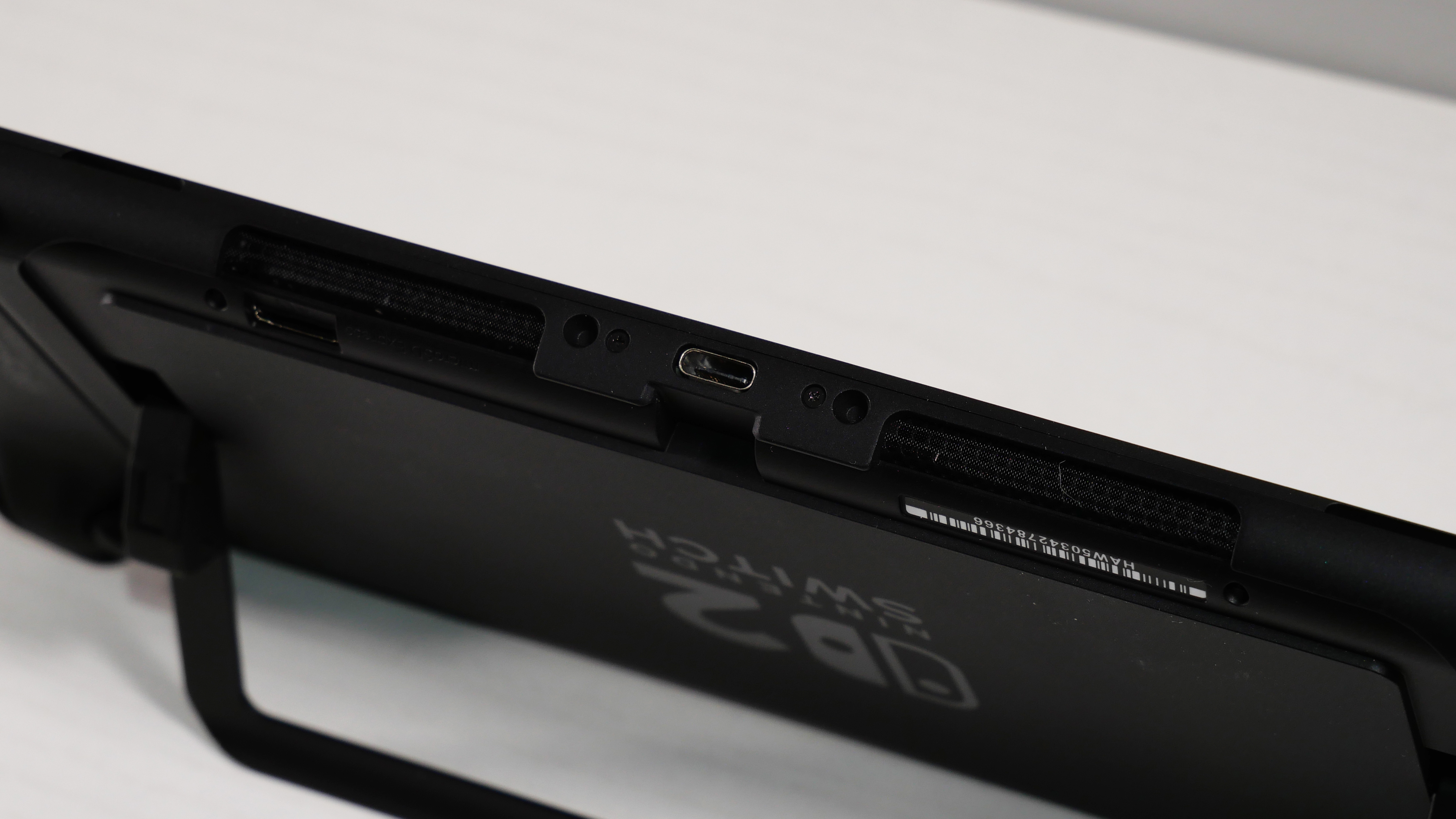
The Nintendo Switch 2’s bottom-firing speakers pack a punch.
The Nintendo Switch 2’s bottom-firing speakers pack a punch.
Leading a small army of minions around Hyrule in The Legend of Zelda: Echoes of Wisdom, backed by cozy stringed instruments, made me feel warm inside. The string and wind instruments weaved together but remained distinct. Summoning my Zol made Zelda produce a pretty intense grunt at max volume, really channeling her inner Link. Yet, splashing around in the water sounded quieter than I expected it to.
I put my foot on the gas in Mario Kart World, which features a bombastic soundtrack, and listened to a wonderful ensemble of instruments that captured unique sounds. Unlike the Zelda track I listened to earlier, there’s a bunch of percussion here, and I noticed that it sounded rather muted. The speakers don’t do a good job of capturing low-end sounds. Despite that, it’s still satisfying to hear the tires hit the road and take off after that infuriating Wario (I’m coming for you).
I got sweet-talked by Songbird in Cyberpunk 2077: Phantom Liberty, and the dialogue between her and V sounded crisp and full. Even the sounds around us, like gunfire and shouting, didn’t overwhelm the primary dialogue, which is super important as someone who’s partially deaf in one ear.
The overall sound stage supports strong mids and highs, but the lows struggle to reach the spotlight.
Nintendo Switch 2: Handheld performance
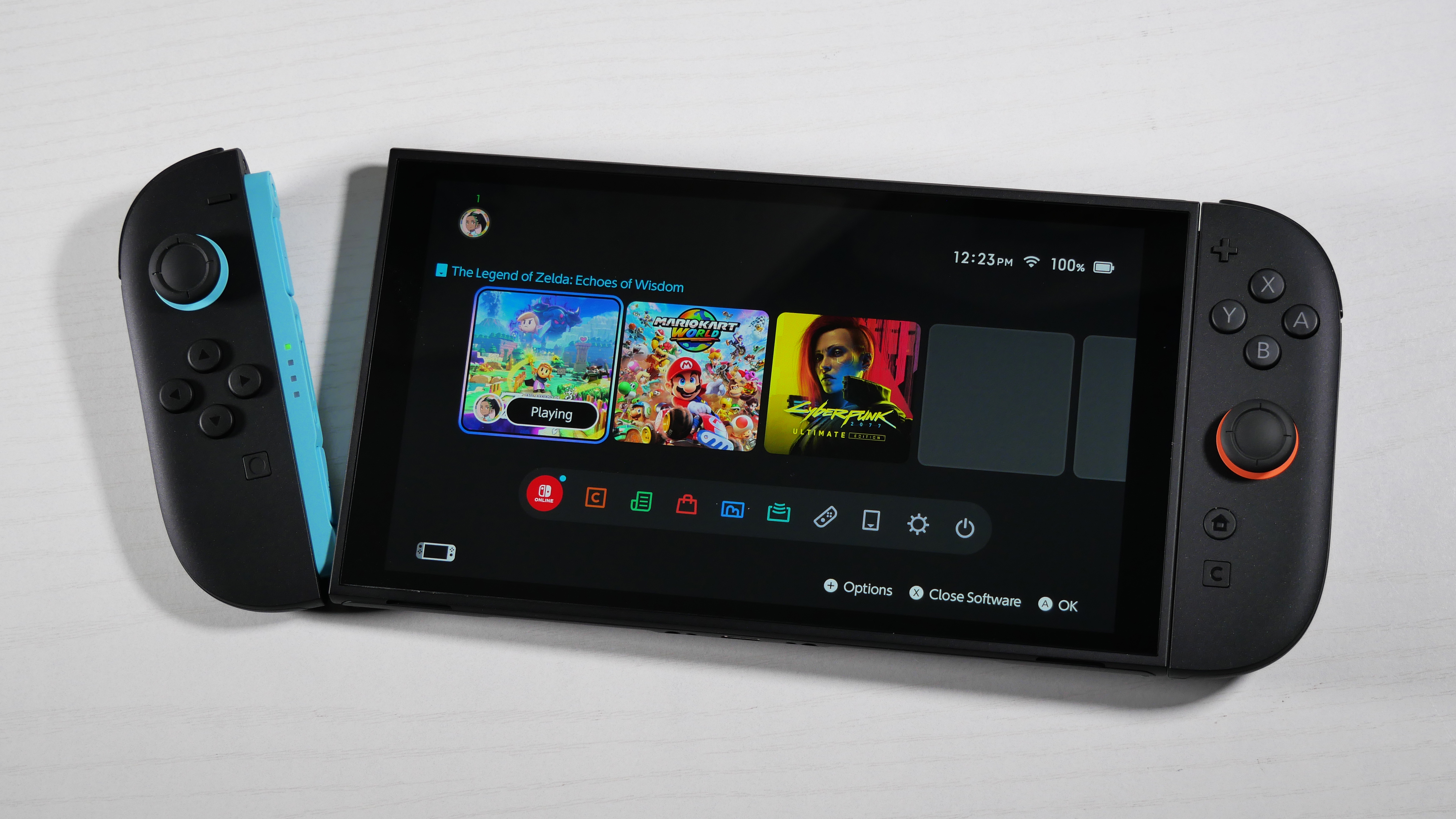
The Nintendo Switch 2 includes the Nvidia T239 custom chipset. We don’t have many intense games to test its performance, but I simply must mention the most demanding game of the hour: Cyberpunk 2077.
To the Nintendo Switch 2’s credit, scoring Cyberpunk 2077: Phantom Liberty is a huge deal. And that’s possible because Nvidia’s custom chipset uses AI frame generation. While some generations behind the RTX 50-series’ DLSS 4, the Nvidia T239 chipset also uses AI to generate frames based on every true frame that exists. In theory, this could double frame rates. That’s not exactly what I’ve seen in my own testing in games like Stellar Blade and Dune: Awakening, but it’s impressive nonetheless.
With Nvidia’s help, the Nintendo Switch 2 is likely going to become the home of many AAA third-party titles. Do you remember those terrible cloud games on the original Switch? Because I do. And I am sure as heck happy to see them disappear into the ether.
Outside of demanding games, the Switch 2 offers a much welcome performance upgrade.
However, my actual experience playing Cyberpunk 2077: Phantom Liberty felt a bit… crunchy. I flipped on Performance mode so I could get a taste of how smooth the frame rates were, but I immediately noticed the loss in resolution. In the settings menu, the “R” icon for the analog stick looked like a distorted mess. Seriously, I couldn't make out that letter in an eye exam. I tried Quality mode, which looked sharper, but even walking around an enclosed space felt sluggish.
Performance mode hit or exceeded 30 frames per second, and my motorcycle ride down to Dogtown felt smooth. However, when I accidentally got into a fight with a small army of guards at the border, the system struggled to keep up, dipping below 30 fps. It's unclear if this is a limitation of the raw performance or of the AI frame generation. I imagine a firmware update could improve the performance.
Outside of demanding games, the Switch 2 offers a much welcome performance upgrade. I could make a Thanksgiving dinner before the original Switch would load up the Nintendo eShop. But the Switch 2 load times are relatively seamless.
With the Switch 2, you also get 256GB of UFS storage. That’s a nice bump from the 64GB on the Switch OLED, but that’s still not a lot for modern gaming. It also switched (pun intended) over to microSD Express cards, which means the microSD card in your original Switch is incompatible. On the bright side, the speeds are faster (up to 880 megabytes per second versus 100 MBps), which means load times will be faster.
Nintendo Switch 2: TV performance
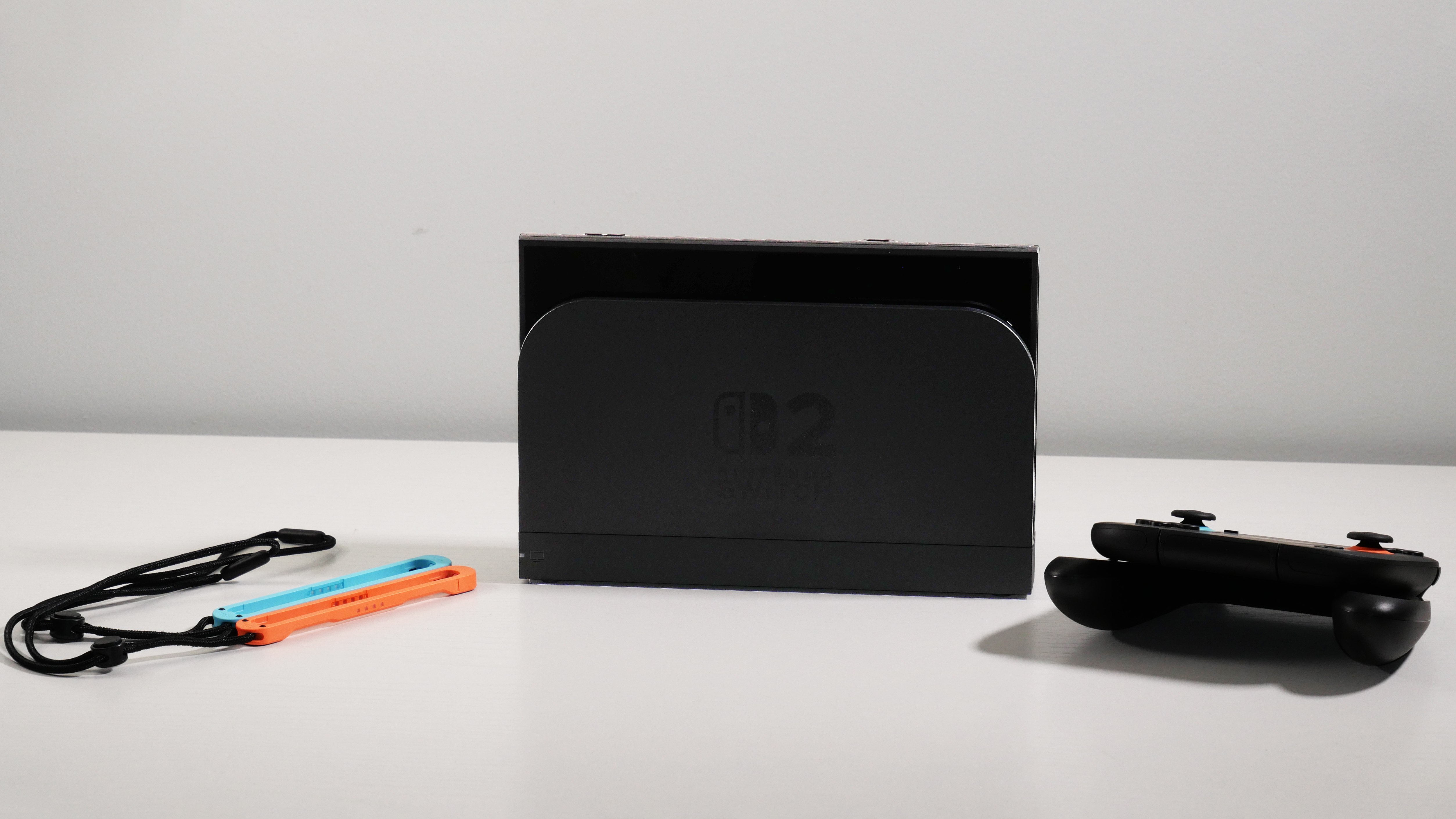
When the Switch 2 is docked, Nvidia’s custom chipset doesn’t need to worry about conserving battery life, so it kicks into overdrive
So, how does gaming in 4K look? Better than I expected. When the Switch 2 is docked, Nvidia’s custom chipset doesn’t need to worry about conserving battery life, so it kicks into overdrive, and let me tell you that the performance difference is significant. The Switch 2 is clocked in at 60Hz when clocked at a 4K resolution, but at 1440p and lower, it’s capable of hitting 120Hz.
I double-jumped my way right back into Cyberpunk 2077: Phantom Liberty and immediately dipped into 4K, Quality mode just to see how bad the fps would be. To my surprise, it managed a smooth frame rate, and it looked good enough that I still got the chills when Space Force One came crashing down on me (best opening sequence ever). There were some frame drops when I found myself up against a large group of enemies or when I drove around a densely populated area.
However, I did not notice a significant difference when moving to Performance mode. Only when I set the Switch 2 to 1080p did I see a nice bump in frames. Carving through enemies with my mantis blades looked as fluid as their blood spatter.
However, since I’m using a 65-inch TV, I saw some fuzziness in the textures. While that’s to be expected (it’s a handheld device after all), I also noticed it on the Home screen icons, which is a bit disappointing.
In less demanding games, like Mario Kart World and Echoes of Wisdom, the textures from the asphalt to the glades looked significantly sharper. There are no performance settings in either game, so I tested both in 4K and 1080p, but the frame rates didn’t seem to look any different.
Nintendo Switch 2: HDR performance
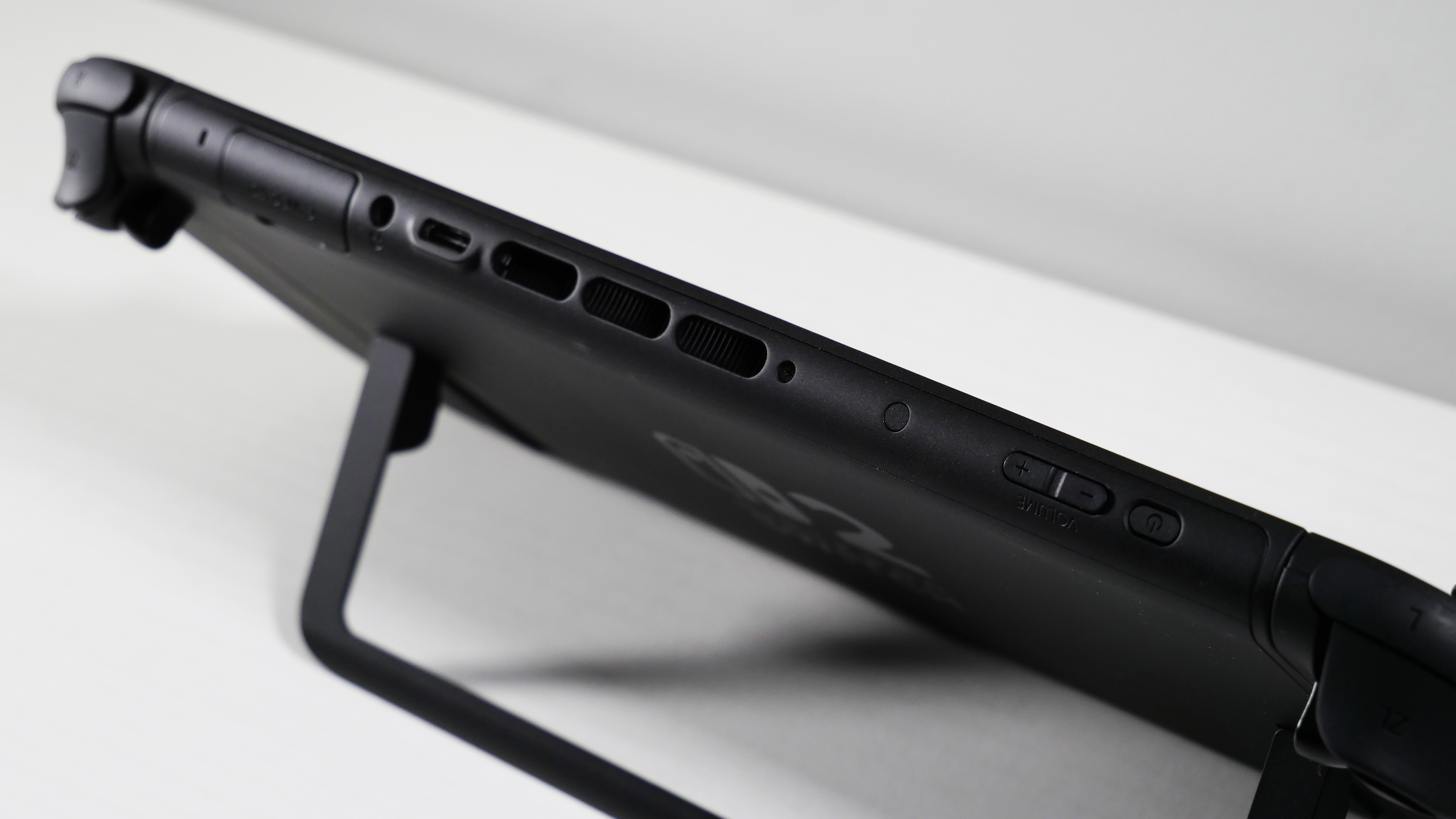
HDR on the Nintendo Switch 2 was a bit complicated to set up because I easily missed one particular setting during setup.
First things first: You need to set your TV's Dynamic Tone Mapping to HGiG; otherwise, HDR will not work as intended.
When you’re in the HDR setup, and after you make the brightness symbol disappear, the next screen will display a rather unhelpful image. You’re actually meant to click Y here so you can adjust the brightness of the image. And you can select between a few images until you get the brightness just right.
If you want to see the difference between HDR and non-HDR content, the HDR Output setting in the Display settings isn’t helpful. You need to scroll down to HDR Output and then select “Off.” It’s only then that I noticed a significant difference while playing Echoes of Wisdom. HDR balances the contrast and brightness on screen to capture more detail. I noticed this in the shadows and sandy beach around me. The contrast looked tamer, evening out across the image. SDR still looked good, but the display is significantly darker with higher contrast. Ultimately, it’s down to preference, but I think HDR offers a truer picture of the content.
You can enable HDR for games that don’t support it, but I recommend doing some testing to see if it actually looks better.
Nintendo Switch 2: Games

what really makes this launch feel lackluster are the games.
Yes, $450 is a heck of a lot to pay for a console that isn’t exactly on the cutting edge of technology. However, what really makes this launch feel lackluster are the games. Sure, lots of folks love Mario Kart, but do they love it enough to buy a whole console just to play Mario Kart World? I certainly don’t. Not to mention that it, once again, costs $80!
Despite the price, I actually do enjoy Mario Kart World. There’s nothing wildly different apart from the open world, which features some decent challenges. What I actually loved about it was a more personal experience: playing with my daughter. I tried introducing her to games, but her hands are still too small, and she gets a bit frustrated with the controls. However, when the Joy-Con 2 controllers are detached, it’s more accessible for her. To top that off, Mario Kart World features settings to auto-drive and auto-steer, so even if she’s not pressing the right buttons, she can actually experience what it’s like to play, and I absolutely love that for her. Now every time she sees the Switch 2, she says “Play game with Baba!” My heart.
Still, I’m not jumping at the Switch 2 for Mario Kart. Let’s be honest here for a second, the original Nintendo Switch launched with The Legend of Zelda: Breath of the Wild — this game literally redefined the entire open-world genre. If the Switch 2 offered something on that scale at launch, I’d sell a kidney to get it (not really… unless?). Regardless of my criticism, the Nintendo Switch 2 is the fastest-selling console of all time.
I’ve already played Cyberpunk 2077: Phantom Liberty on the PS5, so I am hyper-aware of the quality that this game brings to the table. As I briefly mentioned earlier, its expansion is one of the best I’ve played, even rivaling full games in the RPG genre. Needless to say, it won’t live up to the quality you’d receive on other consoles, but getting all of the unique Switch features is neat. You can use the Gyroscope mode to rotate the Joy-Con 2 to aim, touchscreen to navigate the map and menus, Motion Patterns to use physical gestures to dodge, reload, or even heal, and the Mouse mode. The touch screen is useful, but what about the rest? Let’s just say they’re not very convenient — more like a novelty to enable for a hot second and then quickly disable.
With The Legend of Zelda: Echoes of Wisdom, Nintendo updated the resolution for both handheld and docked modes and included HDR support. While the art isn’t that detailed, it’s much more pleasant to look at than on a measly 720p display. There are quite a few Nintendo Switch games that received a free update, plenty of which are incompatible. Of course, you’ll need to buy upgrades for some games, like Breath of the Wild and Tears of the Kingdom, which cost $10.
There are not many exclusive launch day titles apart from Mario Kart World, Bravely Default: Flying Fairy HD Remaster, and Nintendo Switch 2 Welcome Tour, which isn’t even free, and it should be.
Update: Nintendo's June 18 Direct showcased Donkey Kong Bananza, and it looks just as fun as Super Mario Odyssey. I can see this being the reason that folks buy a Switch 2, including me (OLED forgive me).
Nintendo Switch 2: GameChat
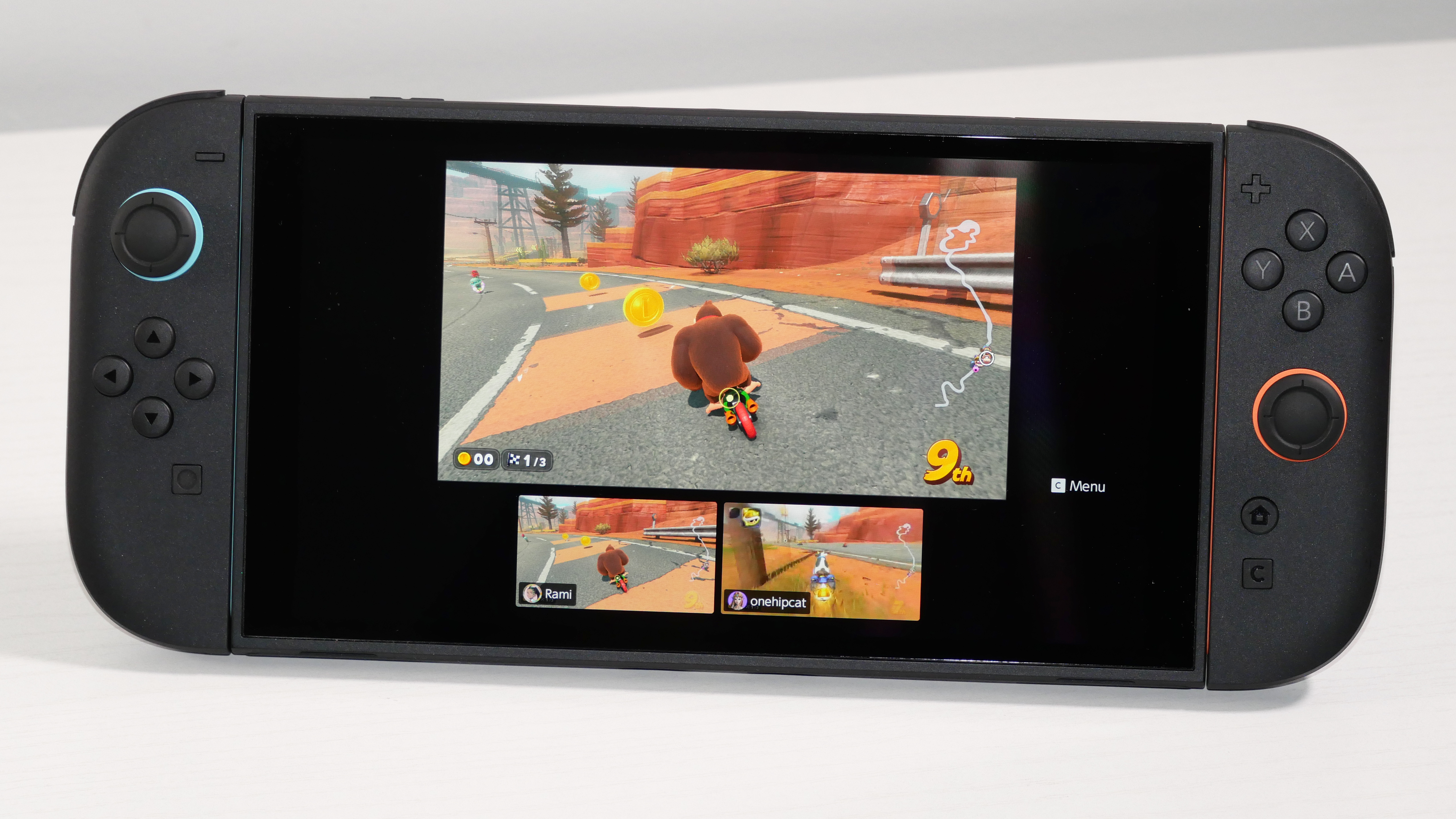
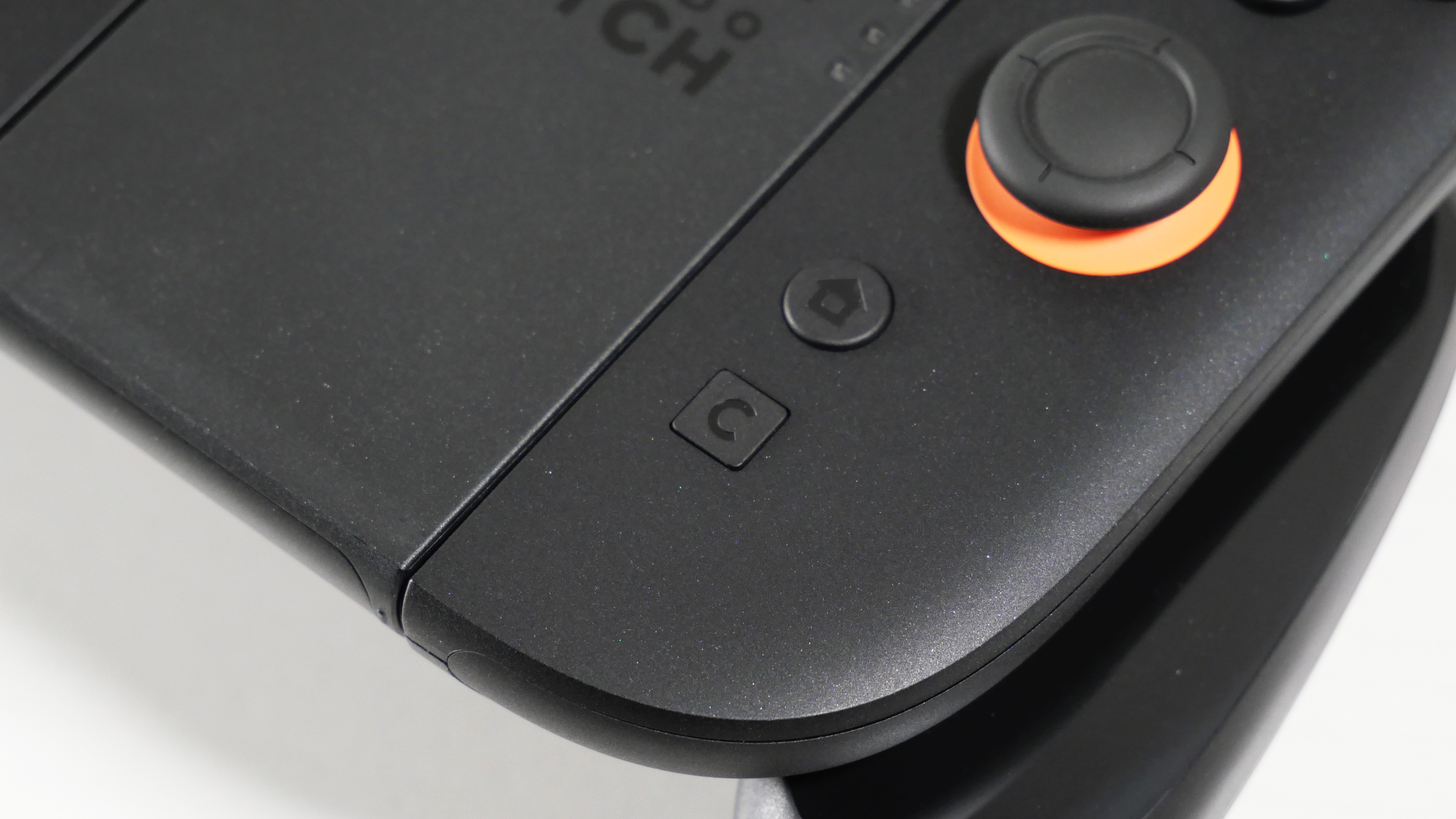

Let’s talk about that fancy new C button. Do you remember when the Nintendo Switch had that weird proprietary phone app to voice chat with friends? Well, now all of that is built into the Switch 2. I would praise Nintendo if this weren’t something that should’ve already been included in the original Switch.
To get started, I only had to click the C button to open up GameChat. You do have to go through the motions of signing a Terms of Service agreement, signing in again, and attaching your phone number (weird, but likely to avoid children from randomly hopping on GameChat). Then, you can select which friends can GameChat with you (I like this feature).
I booted up GameChat to play Mario Kart World with a friend, and the experience was interesting to say the least. The mic quality is crunchy, but audible for the most part. It did seem like there was a bit of a delay while chatting because my friend and I caught ourselves talking over each other multiple times, but it didn’t feel so detached that it was unusable.
I booted up GameChat to play Mario Kart World with a friend, and the experience was interesting to say the least.
There’s no GameChat balancing per se, but you can either lower or raise the volume of the game itself, and there’s a setting enabled by default to lower the game volume when people are speaking. I was afraid that this would be redundant if the microphone kept picking up noise anyway, but it did a decent job at blocking out background noise. It avoided picking up the fan blowing behind me.
We streamed our gameplay to each other, and true to the Switch 2 trailer, the overall sharpness is decent, but it streams at sub-30 fps, so it looks janky.
You can expand the screen layout in three ways: Standard (which prioritizes GameChat), Expand Main Screen (which minimizes it but keeps it visible), and Full Screen (which does away with it entirely). In Full Screen mode, it’ll make GameChat speakers visible in one corner of the screen (your choice), or you can disable that entirely.
Overall, GameChat is decent. Will I be using it myself? Probably not. Discord is still more convenient. However, watching friends perish in The Duskbloods when it launches in 2026 will be fun.
Nintendo Switch 2: Virtual Game Card

I have a love/hate relationship with the Virtual Game Card system.
I have a love/hate relationship with the Virtual Game Card system. I initially thought this would be a revolutionary technology because you can share games with friends for at least two weeks without the need for a physical copy. However, Nintendo had to make this system needlessly complicated.
If you own multiple Nintendo Switch consoles, you must trade your Virtual Game Cards back and forth to play the games you want. To do that, both systems need to be on. If they’re not, you can select “System Unavailable,” but all downloadable software or DLC you’ve purchased will be temporarily unavailable for other systems.
The issue is that these games are, in theory, linked to your account, but the actual ownership comes down to the physical console. There’s a lot of extra work involved to unlink a console you don’t own anymore, down to going to the Nintendo website. You can technically play games you’ve already downloaded on a console so long as you have the Use Online Licenses setting enabled (found in User Settings).
With Xbox or PlayStation, you can access your games wherever you are without issue, so long as you’re connected to the internet. Granted, you can’t share games like the Switch 2 can, but technically, you can share your entire library with at least one person on both Xbox and PlayStation.
Sharing games with yourself shouldn’t be this complex.
Nintendo Switch 2: Operating system and features
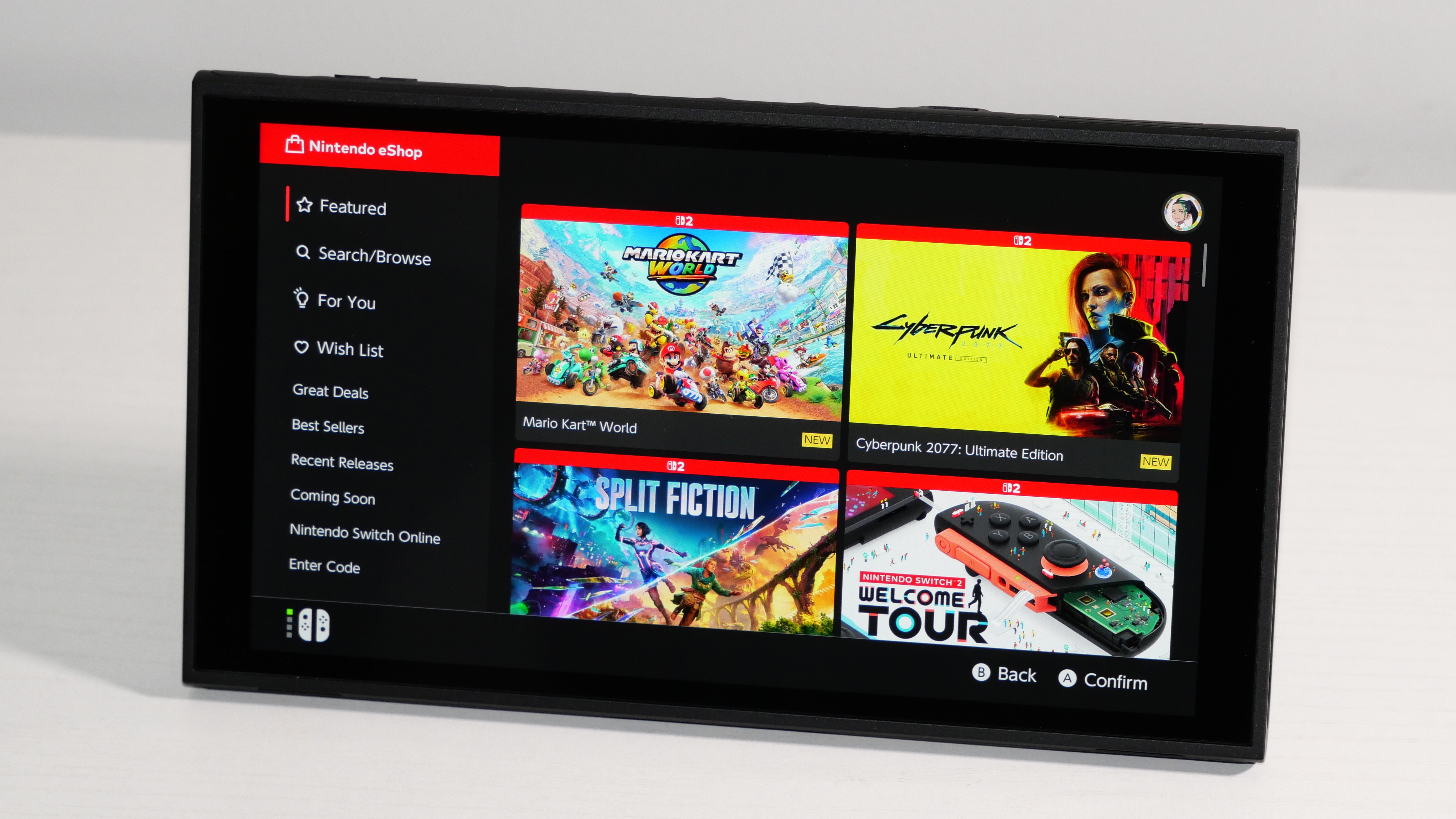
The overall operating system for the Switch 2 remains generally unchanged, apart from the addition of the new aforementioned features, like GameChat, GameShare, and Virtual Game Cards.
Nintendo Switch 2 also offers advanced parental controls, which you can control via a smartphone app. You can adjust the times system-wide or based on individual games. You can set soft or hard limits, the former being a simple indicator and the latter completely suspending the Switch (even Nintendo emphasizes this should be a last resort because your child may lose save data — and I agree). You can also restrict games based on ratings and manage who they can GameChat with.
The Nintendo eShop received an update that cleaned up a lot of the visuals, and combined with more powerful performance, it’s easier to navigate. You also get immediate access to your wish list instead of having to dig for it in your profile. However, I noticed that the Joy-Con 2 analog stick and D-pad are hyper-sensitive in the shop, occasionally skipping over a couple selections in one input. That’s likely a bug that’ll hopefully get patched.
One minor grievance I have is that the Nintendo Switch 2 ships with only the Basic Light and Basic Dark themes. I am hoping Nintendo provides some updates with more choices, but come on, it’s been eight years, Nintendo. Give us something original.
The Nintendo Switch 2 comes with a one-year limited warranty.
Bottom line

I love it and hate it at the same time
Unlike Link, I cannot silence my many thoughts about the Nintendo Switch 2. I love it and hate it at the same time, but you could argue that hate is a part of love (in some circumstances). So, do I love it enough to buy it? Well… no. Like I said earlier, the lack of OLED kills the Nintendo Switch 2 for me, but that doesn’t mean that it isn’t right for you.
The Nintendo Switch 2 is an incredible device with remarkable power, thanks to Nvidia’s custom chip that provides frame generation. With that power, it can run one of the most demanding games out there. Considering the original Switch’s considerably lower performance, this is an Olympic leap forward.
Apart from the performance, the most significant update lies in the display. The Switch 2’s LCD is better than that of the original Switch. It features a sharper panel, a higher refresh rate, and an overall larger display.
If you frequently play with individual Joy-Con controllers, the Joy-Con 2 update is downright necessary for your comfort.
And to top all that off, you get some strong speakers and decent battery life.
Don’t get me wrong — I’m disappointed about more than OLED — the comfort and price are rough. And while I do praise the current performance, I think it needs a few updates to eliminate the frame drops.
Overall, though, the Nintendo Switch 2 is a hell of a gaming console, and there’s really nothing else like it. No, seriously, there’s nothing like it. Where are you going to play Mario Kart World? Or the new Zelda game? Or the new mainline Mario game? Sorry, kids, if you want to play those games, you need the Nintendo Switch 2.
But I’ll just twiddle my thumbs until the Switch 2 OLED inevitably launches.

Rami Tabari is the Reviews Editor for Laptop Mag. He reviews every shape and form of a laptop as well as all sorts of cool tech. You can find him sitting at his desk surrounded by a hoarder's dream of laptops, and when he navigates his way out to civilization, you can catch him watching really bad anime or playing some kind of painfully difficult game. He’s the best at every game and he just doesn’t lose. That’s why you’ll occasionally catch his byline attached to the latest Souls-like challenge.
You must confirm your public display name before commenting
Please logout and then login again, you will then be prompted to enter your display name.
